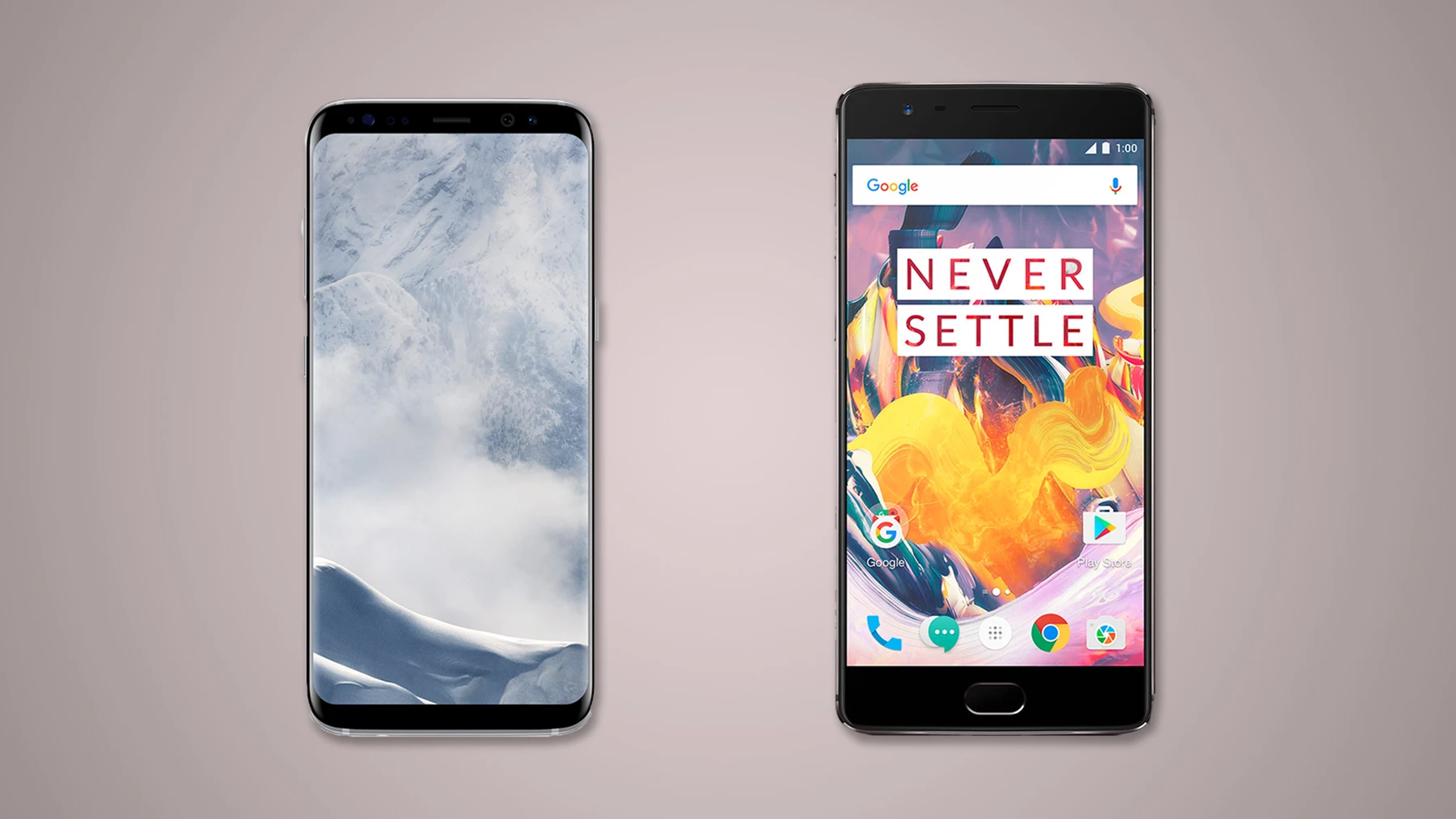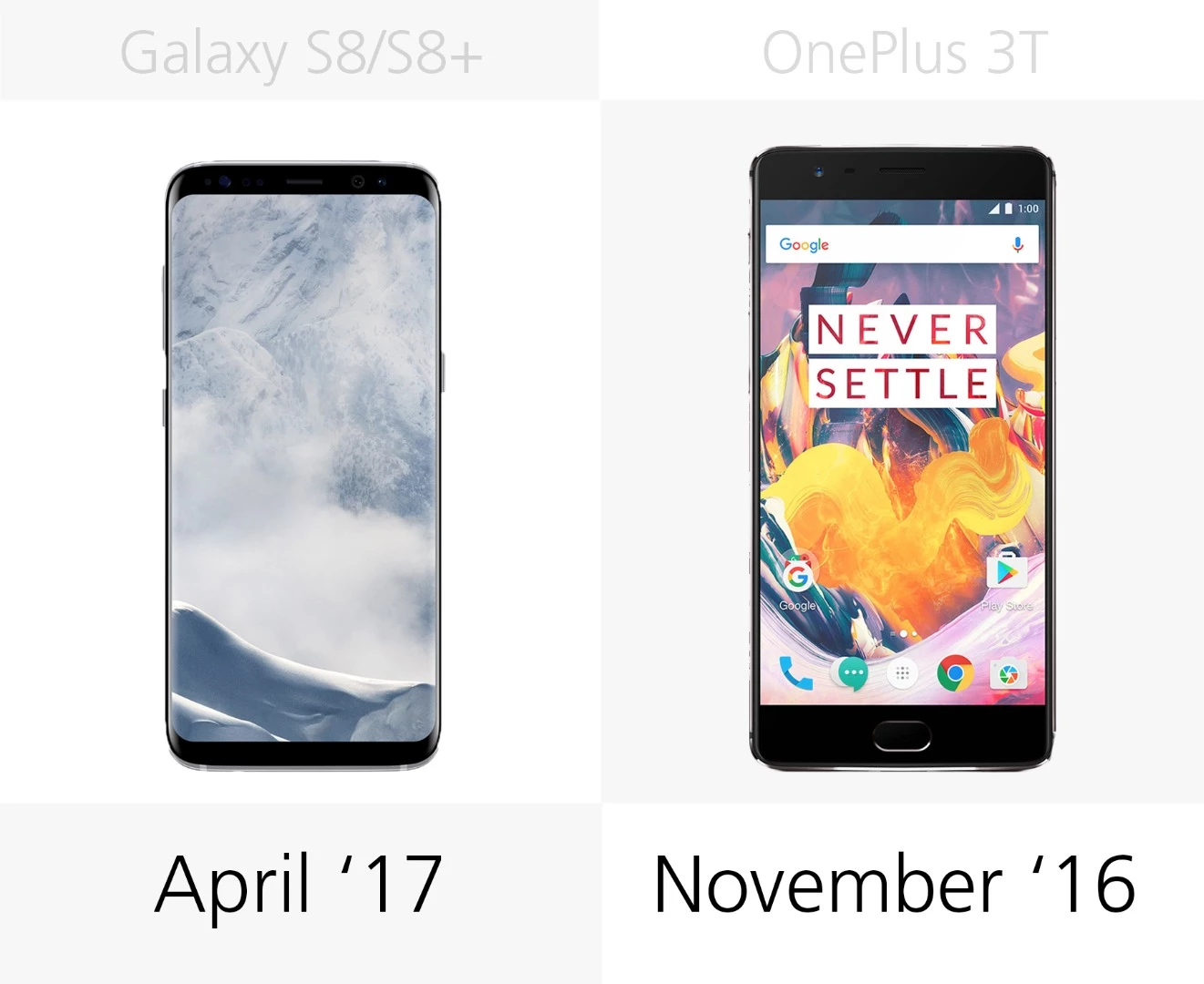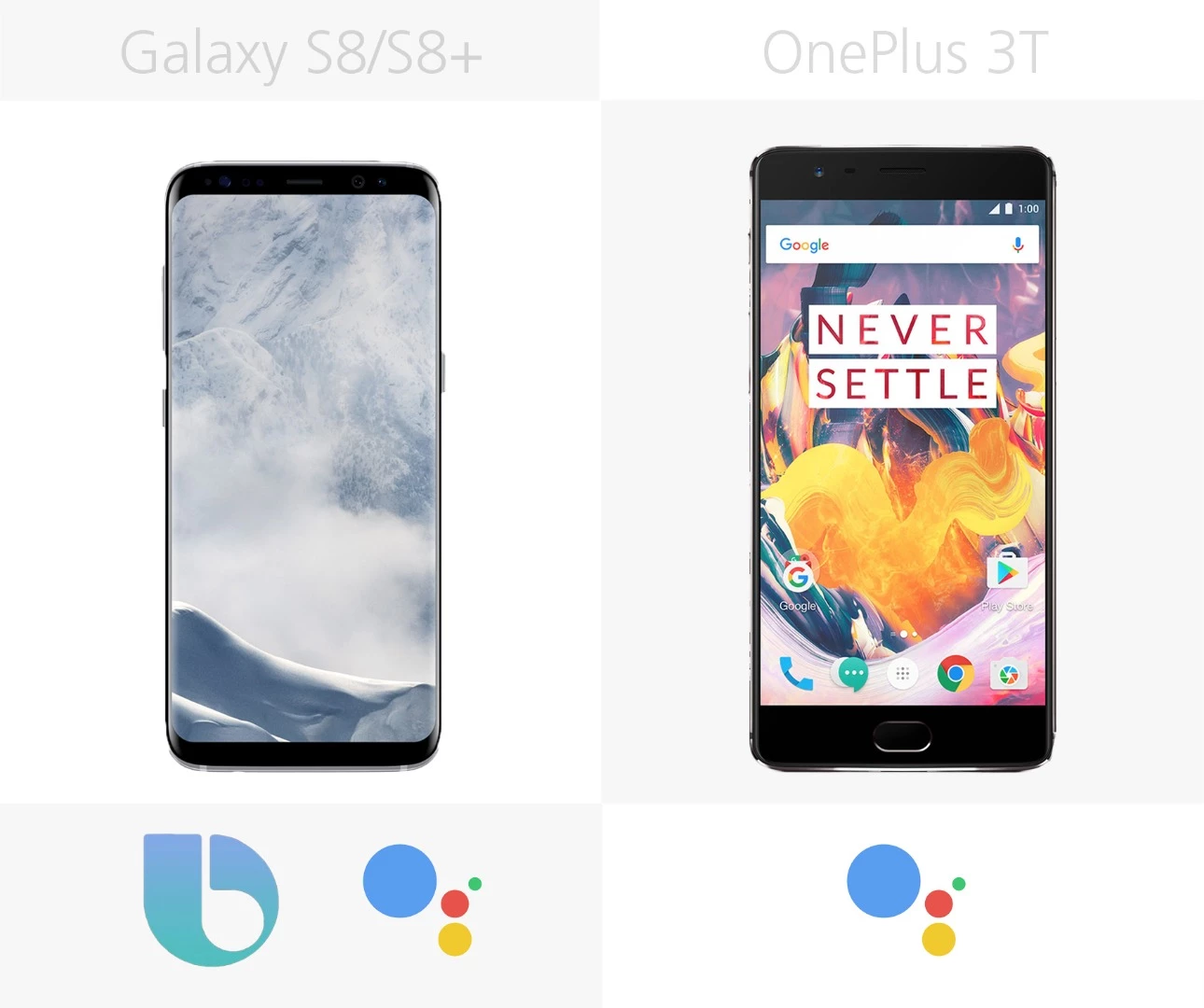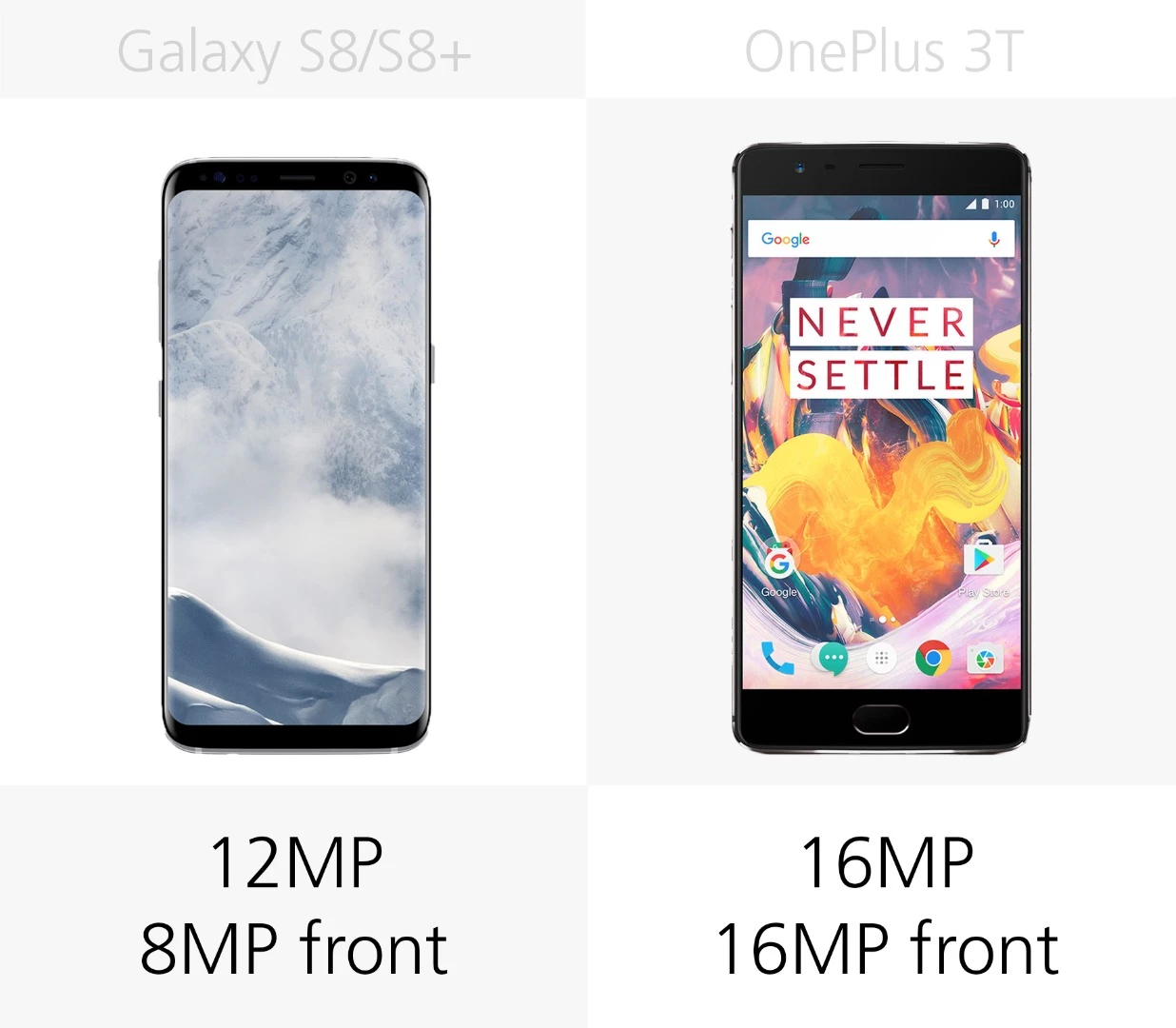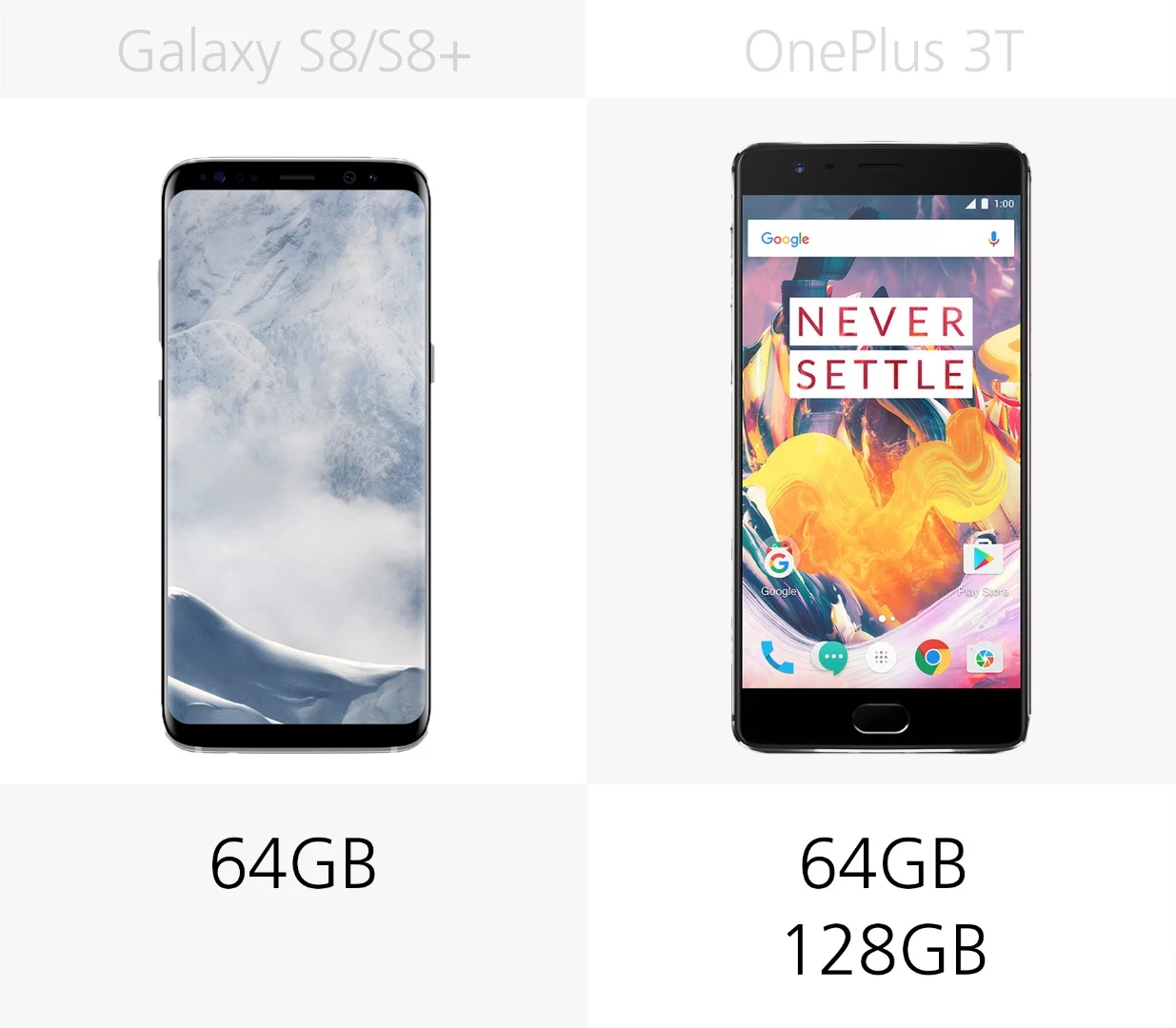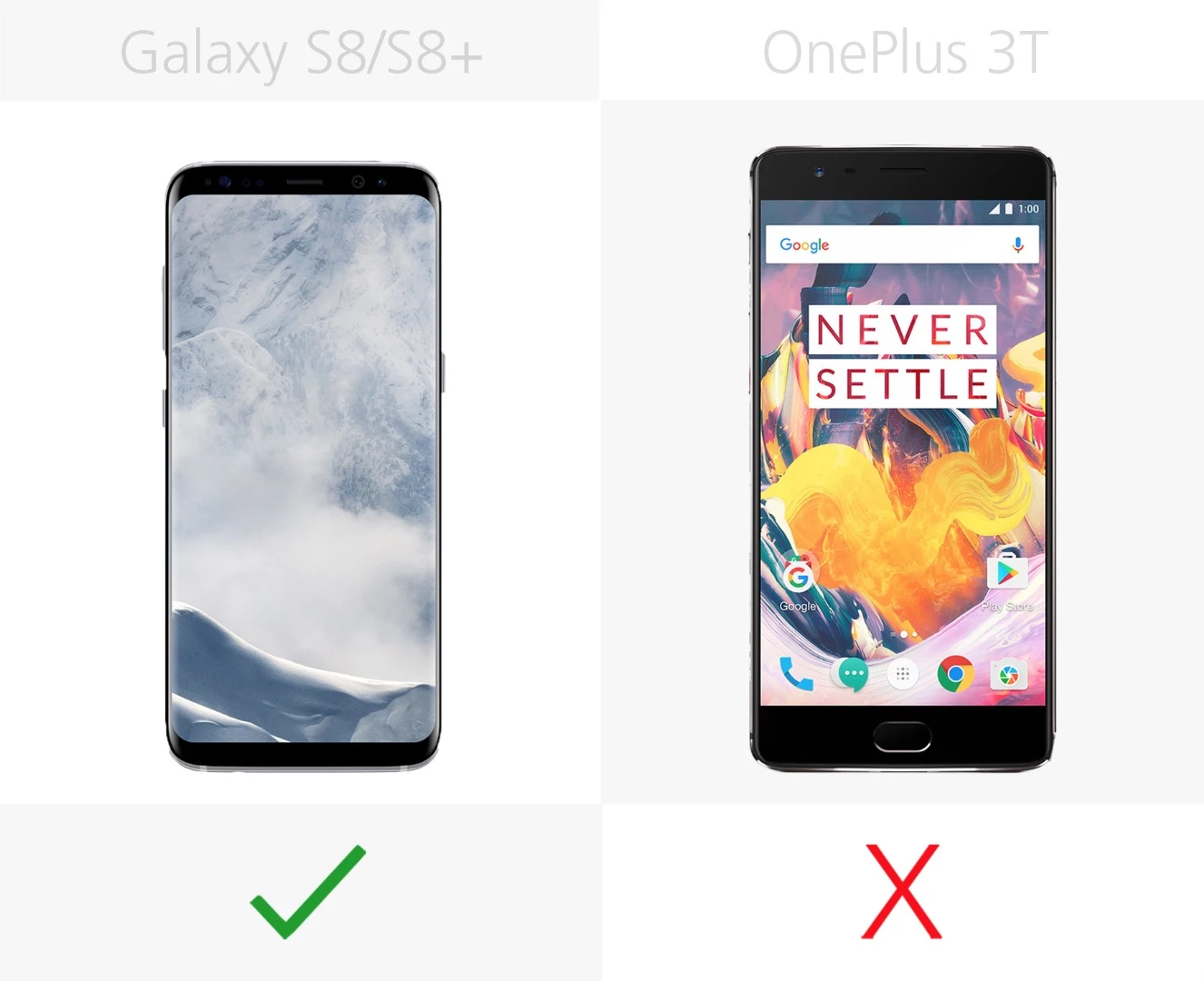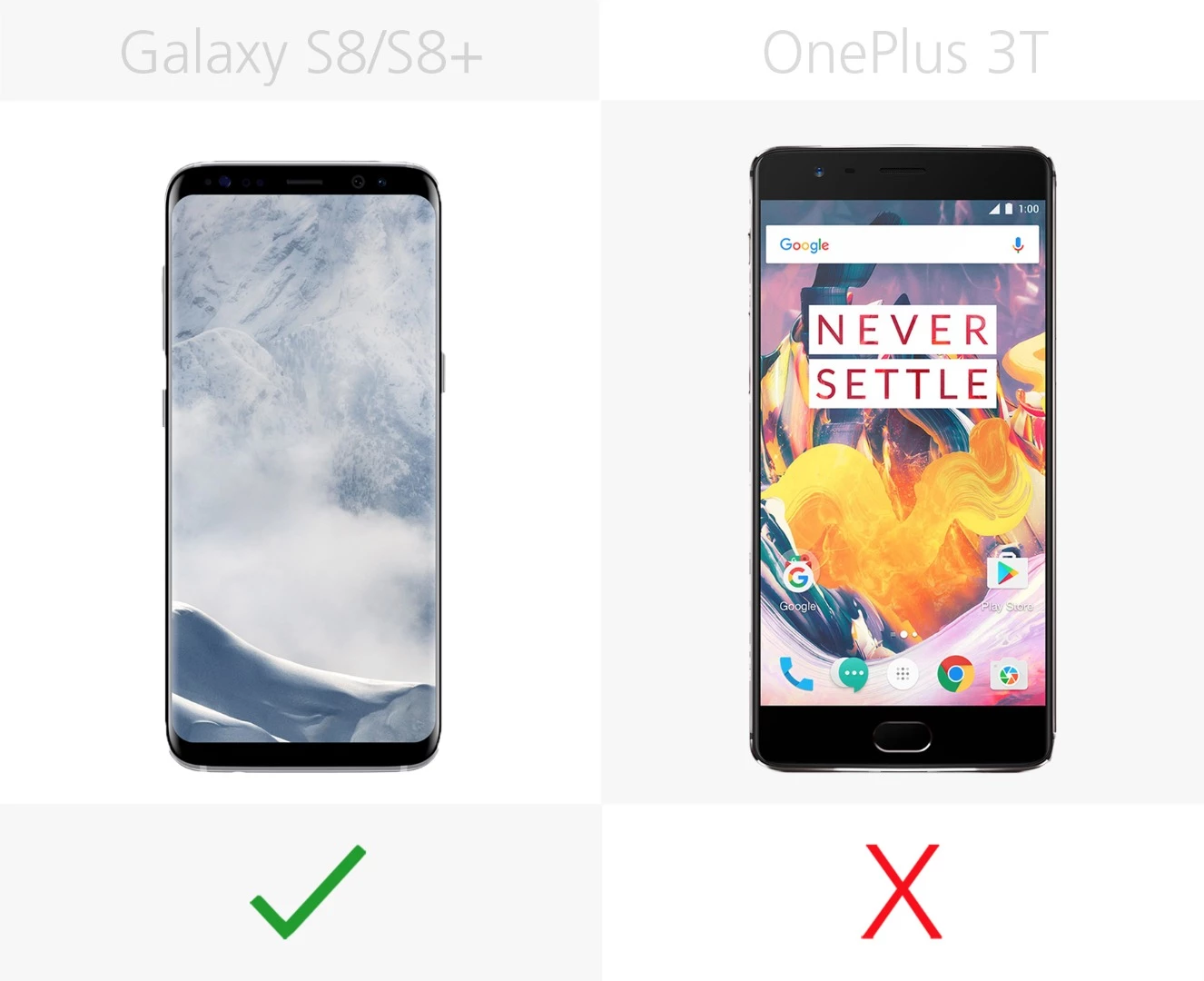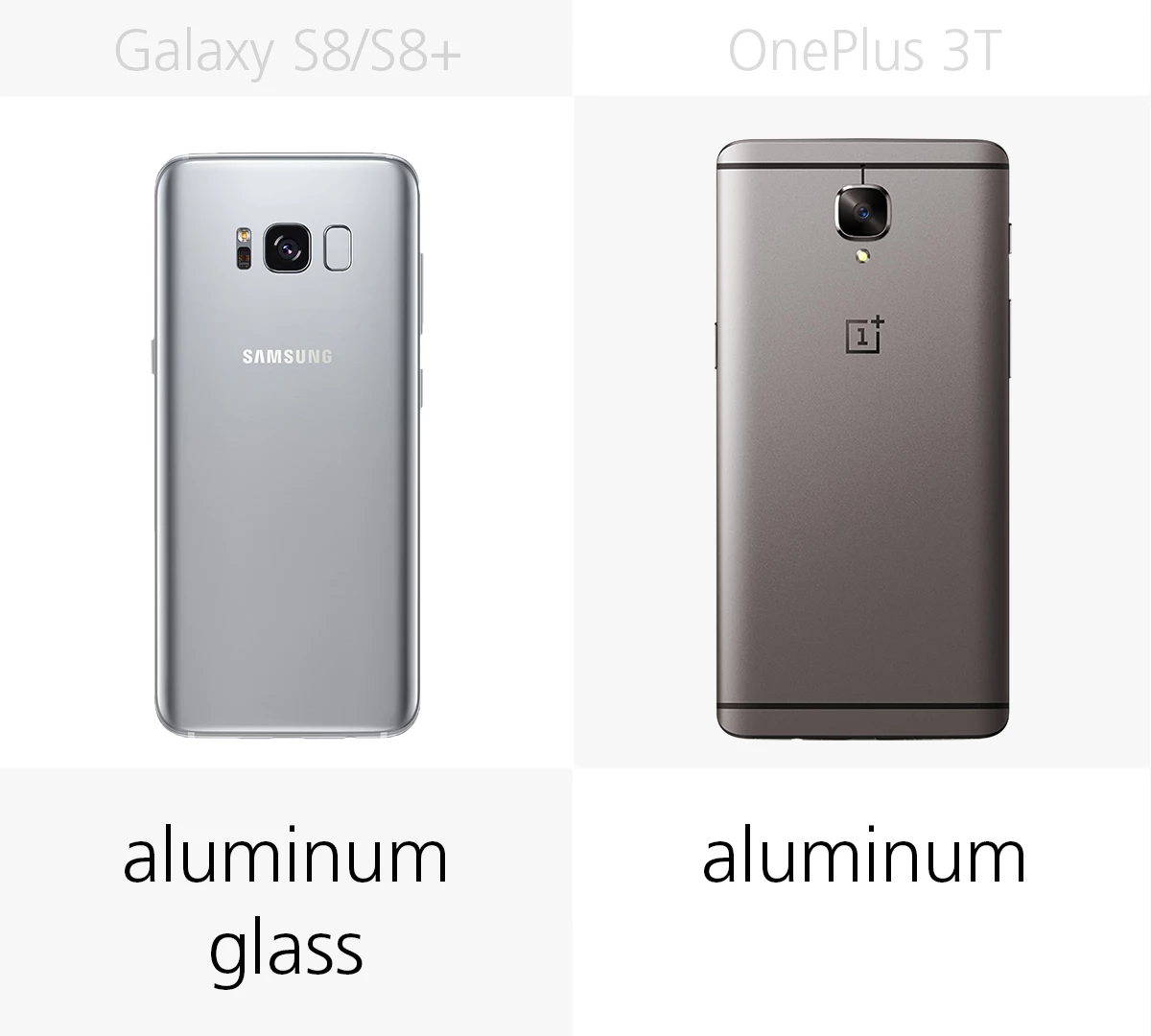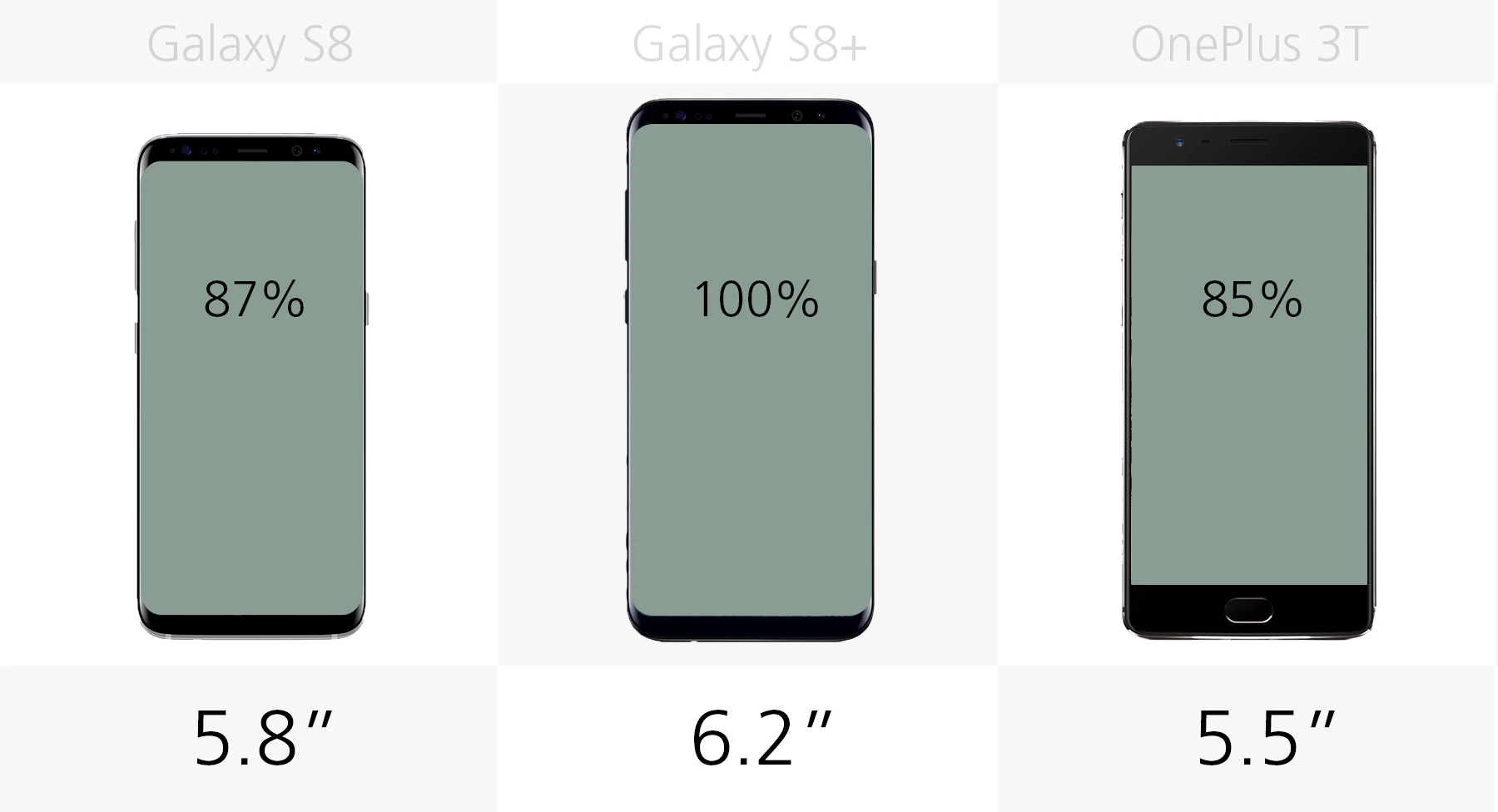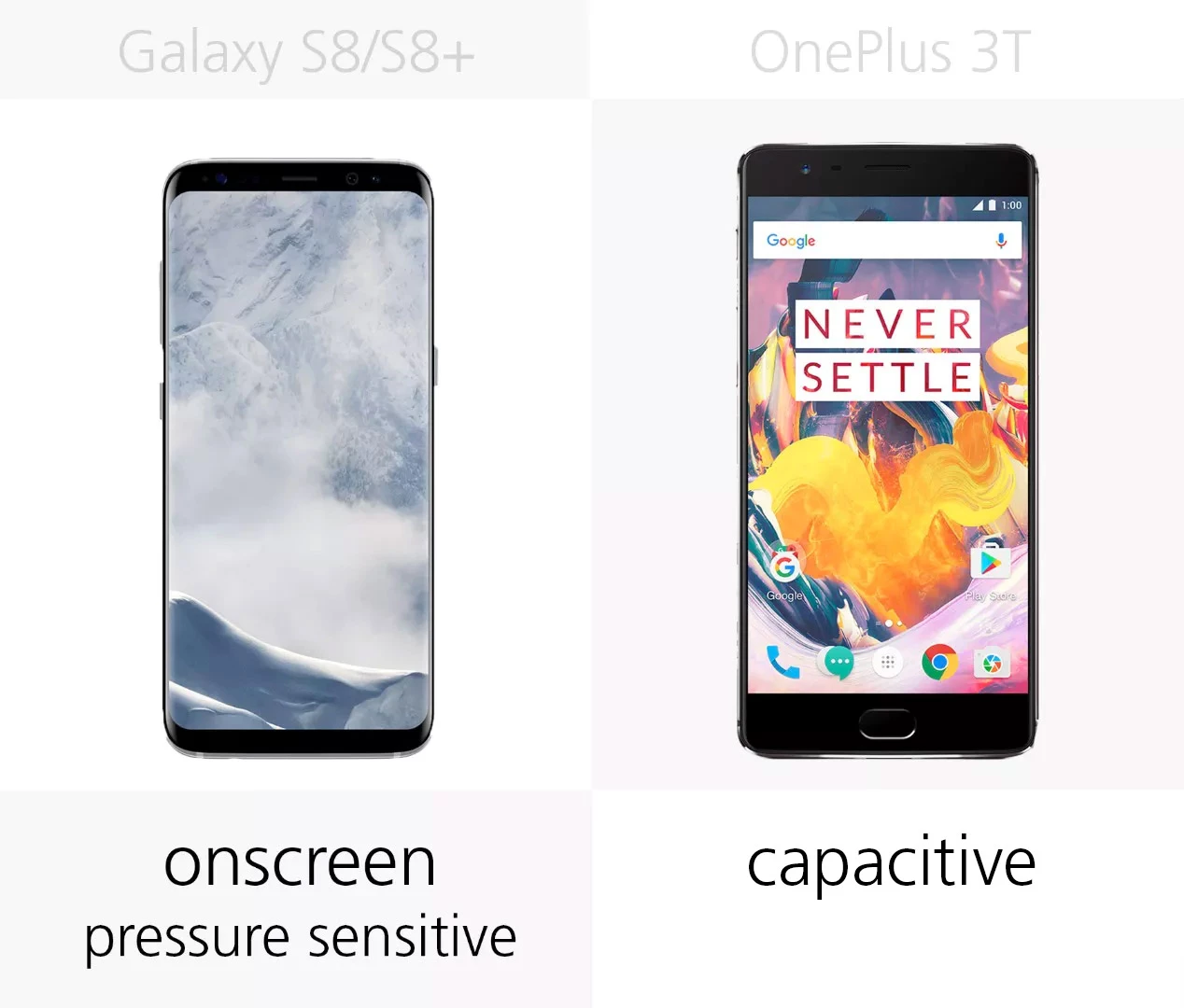How do the specs and features of Samsung's latest premium flagships compare to the wallet-friendly OnePlus 3T? Despite hundreds of dollars of difference in price, the Galaxy S8, S8+ and 3T have a fair amount in common. Let's take a look.
Note that the Samsung Galaxy S8 and S8+ share many of the same specs. In those cases, we have only included an image of the S8.
Size
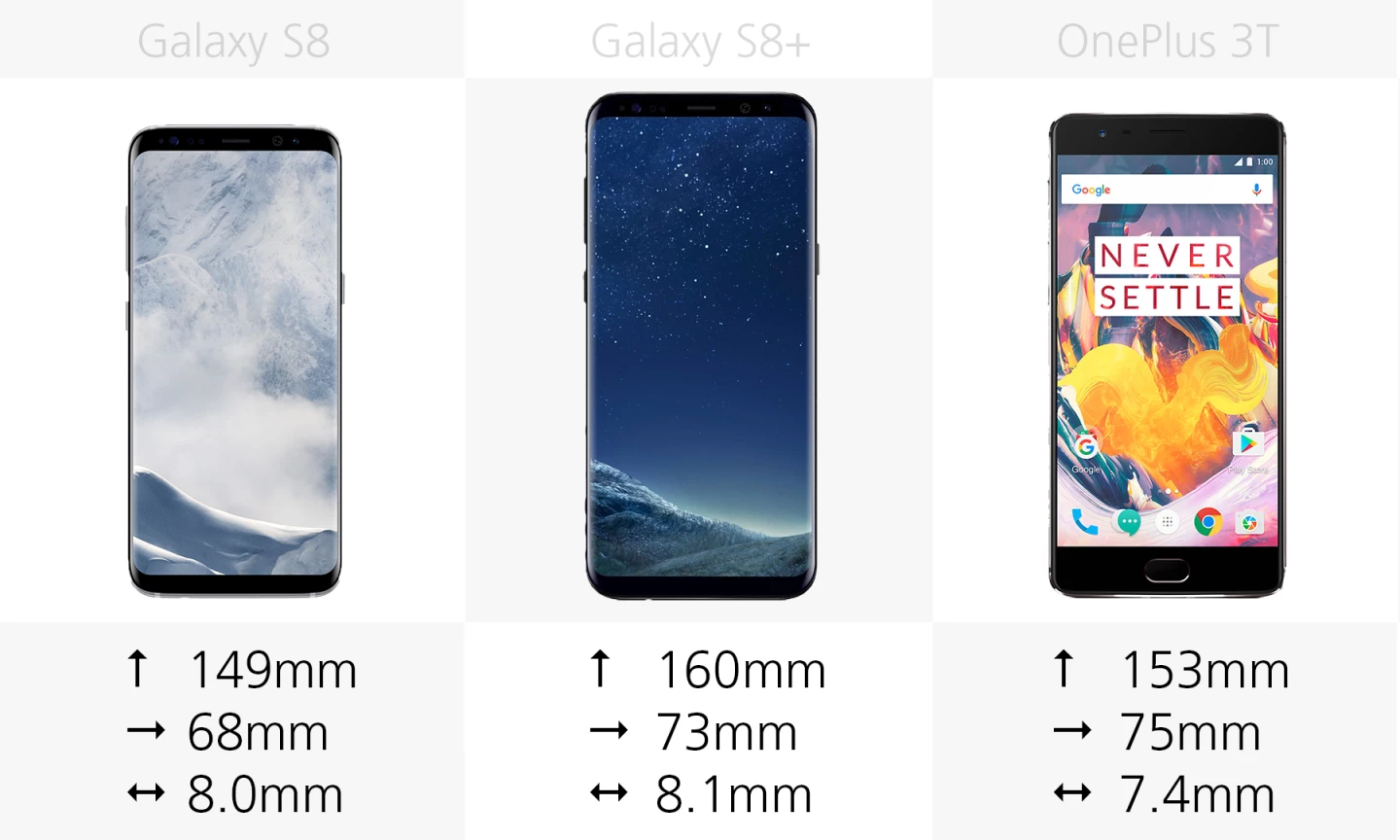
The biggest phone in this lineup is the S8+, which stands about 4-percent taller than the OnePlus 3T and 7-percent taller than the regular S8. Both of the S8 series phones are a little narrower and thicker than the 3T, however.
Weight
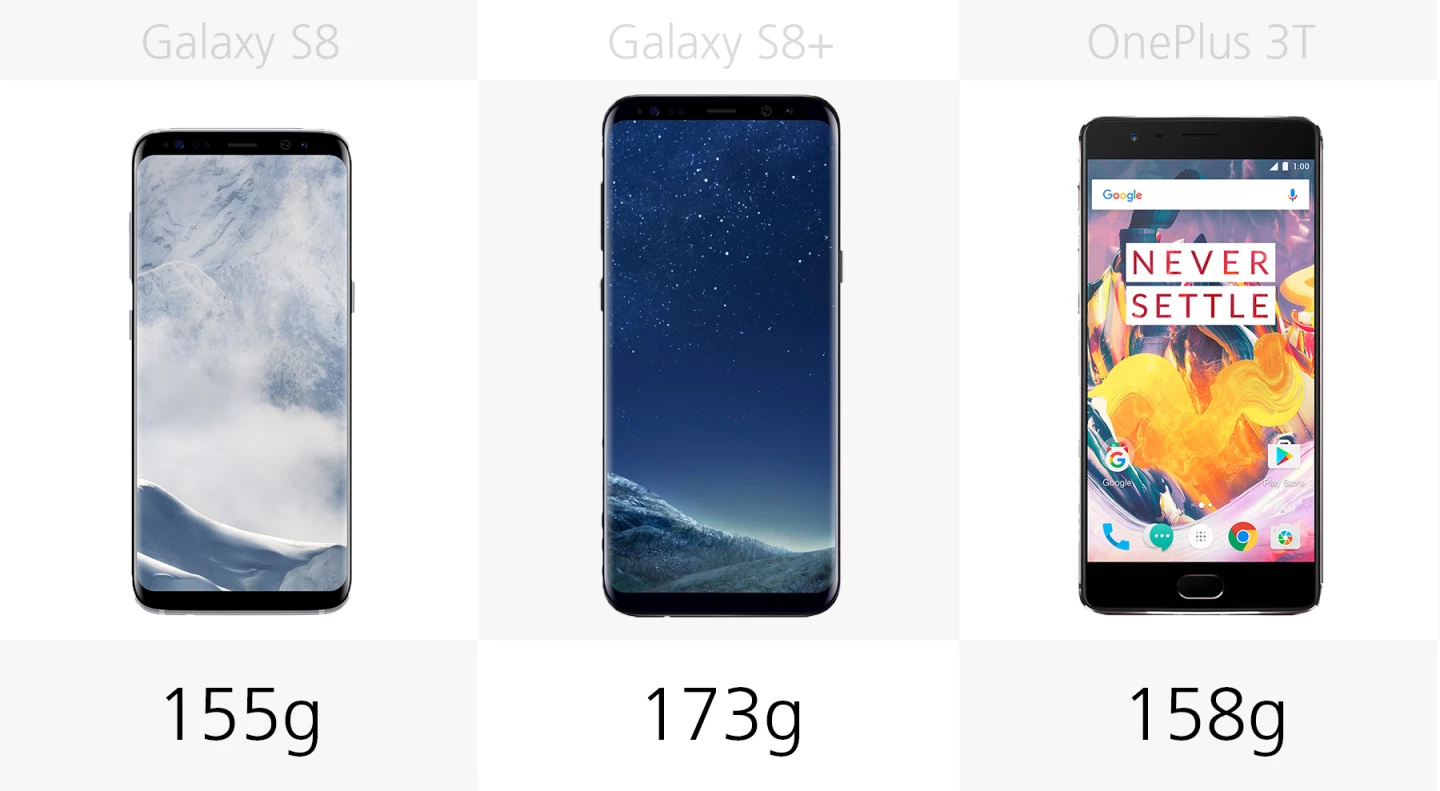
It follows that the S8+ is the heaviest as well. It weighs about 9-percent more than the 3T and 10-percent more than the S8.
Build materials

The S8 series phones have curved glass backs that disappear into a minimal aluminum frame. The OnePlus 3T has an aluminum unibody.
Colors
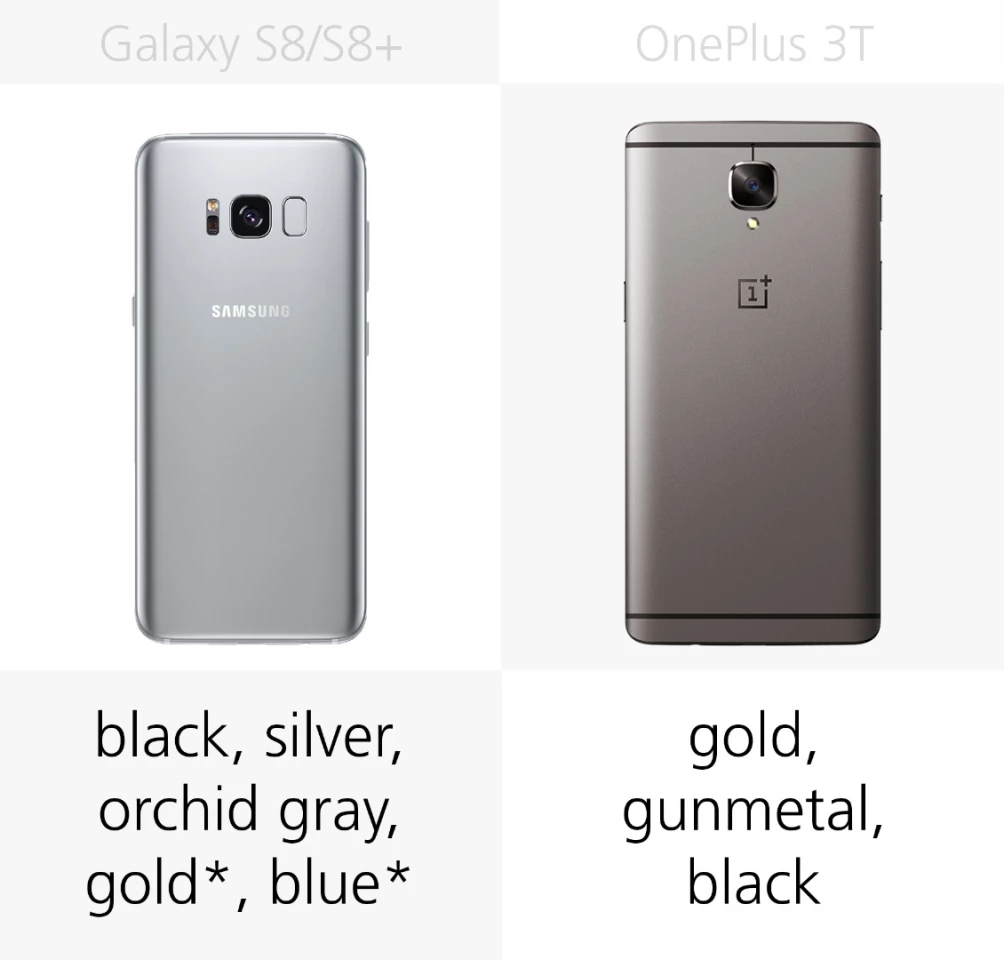
The S8 and S8+ come in five different colors, but only black, silver and orchid gray variants will be available in the US at launch. The OnePlus 3T comes in gold, gunmetal or black.
Water resistance
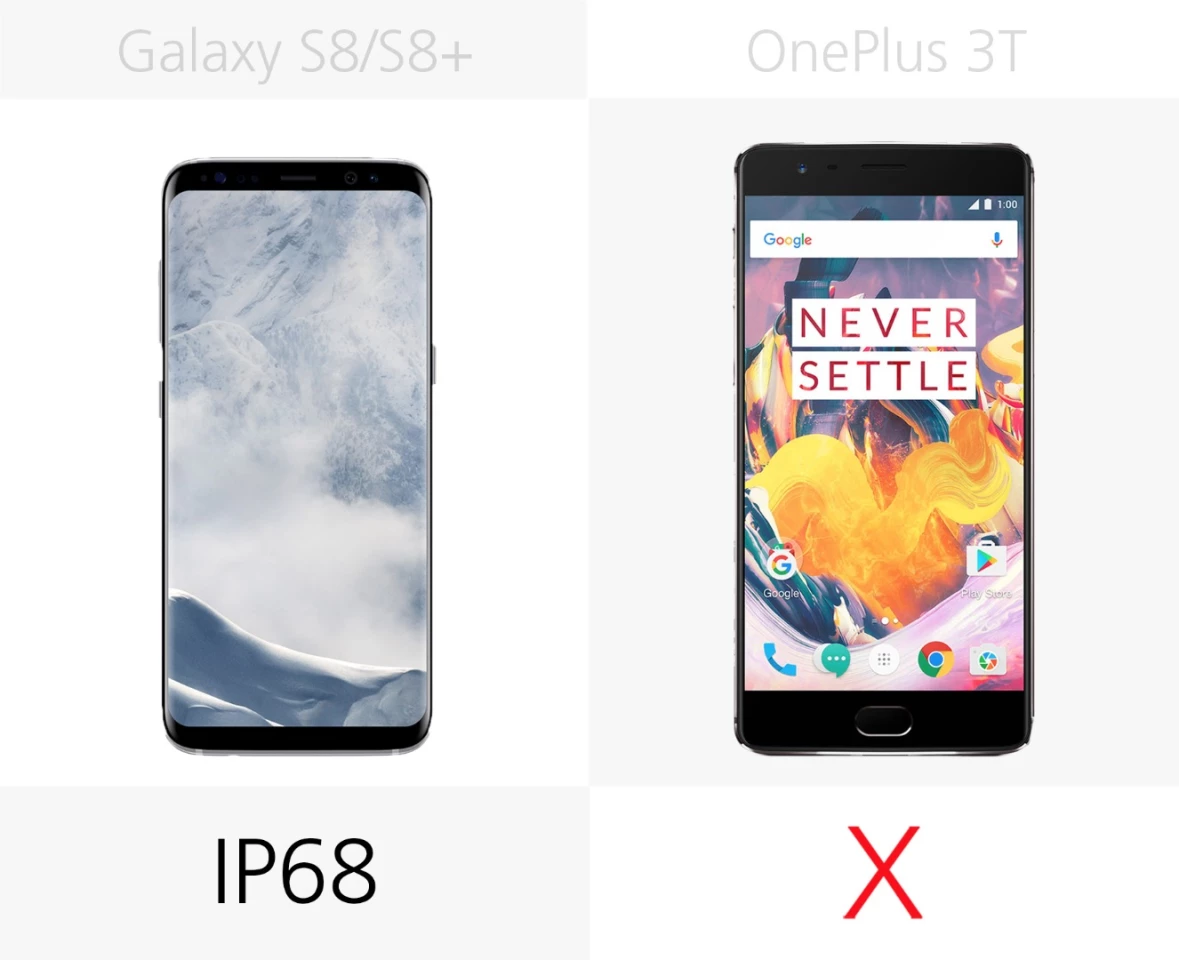
With an IP68 rating, the S8 and S8+ are some of the most water resistant phones on the market. The OnePlus 3T is not similarly protected.
Display size

The crowning feature of the S8 and S8+ is the so-called Infinity Display, which covers nearly the entire front of the phone. Even the smaller S8 packs in more overall screen area than the OnePlus 3T.
Display resolution
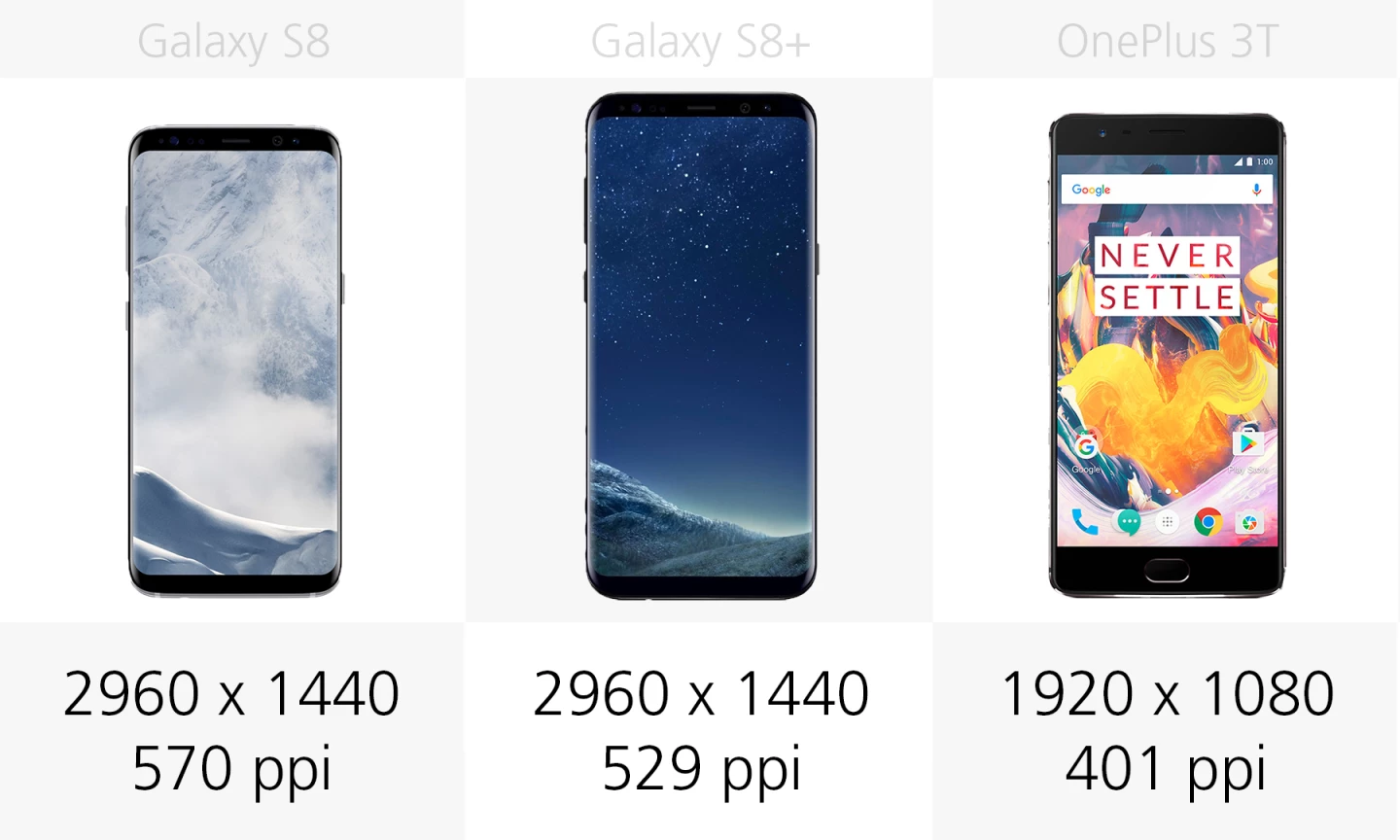
The Samsung displays pack in the pixels as well. They both have 2,960 x 1,440 resolution, which makes the smaller S8 slightly more pixel-dense. The OnePlus 3T's 401-PPI resolution falls a notch behind.
Display type
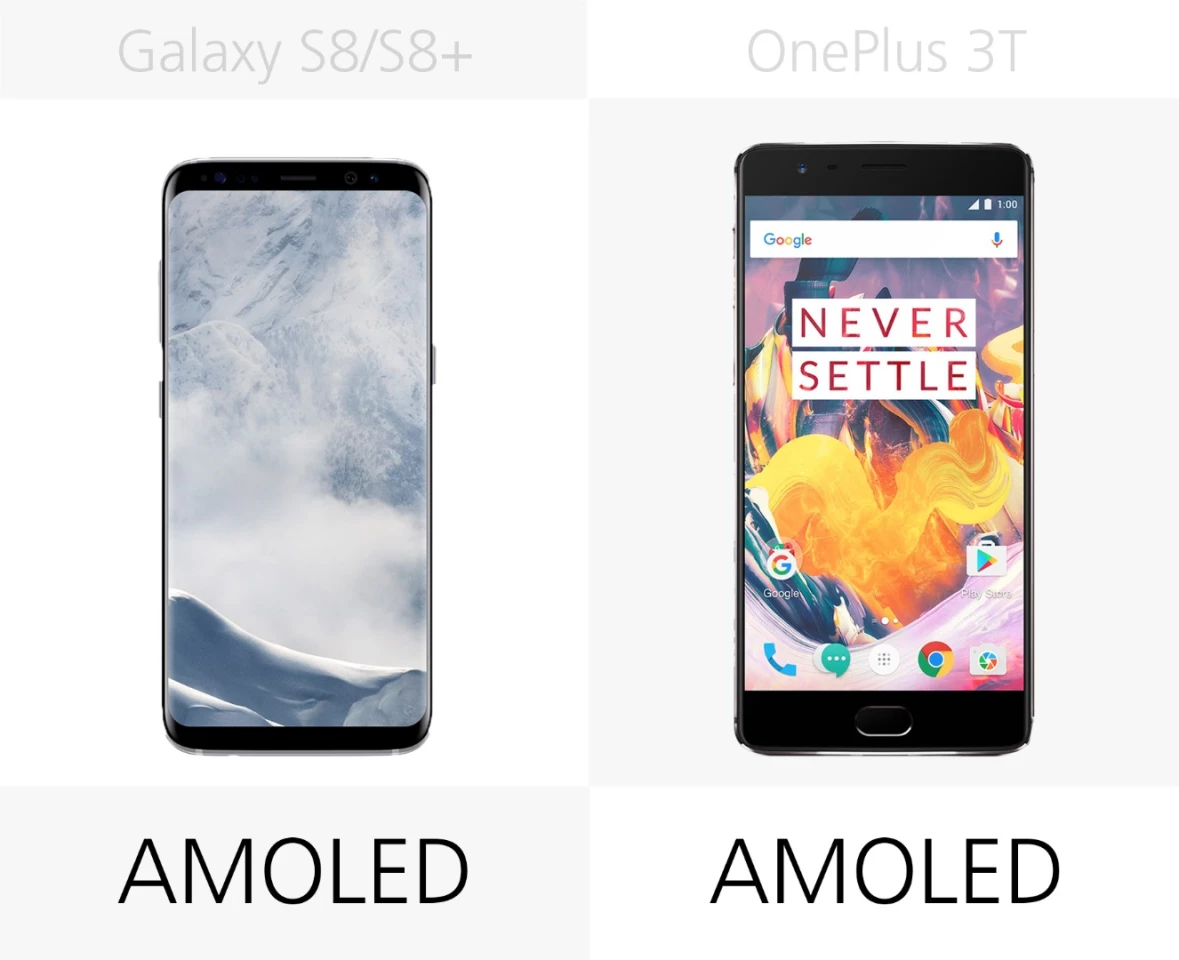
Both makers opt for color-rich AMOLED display technology over IPS.
HDR display
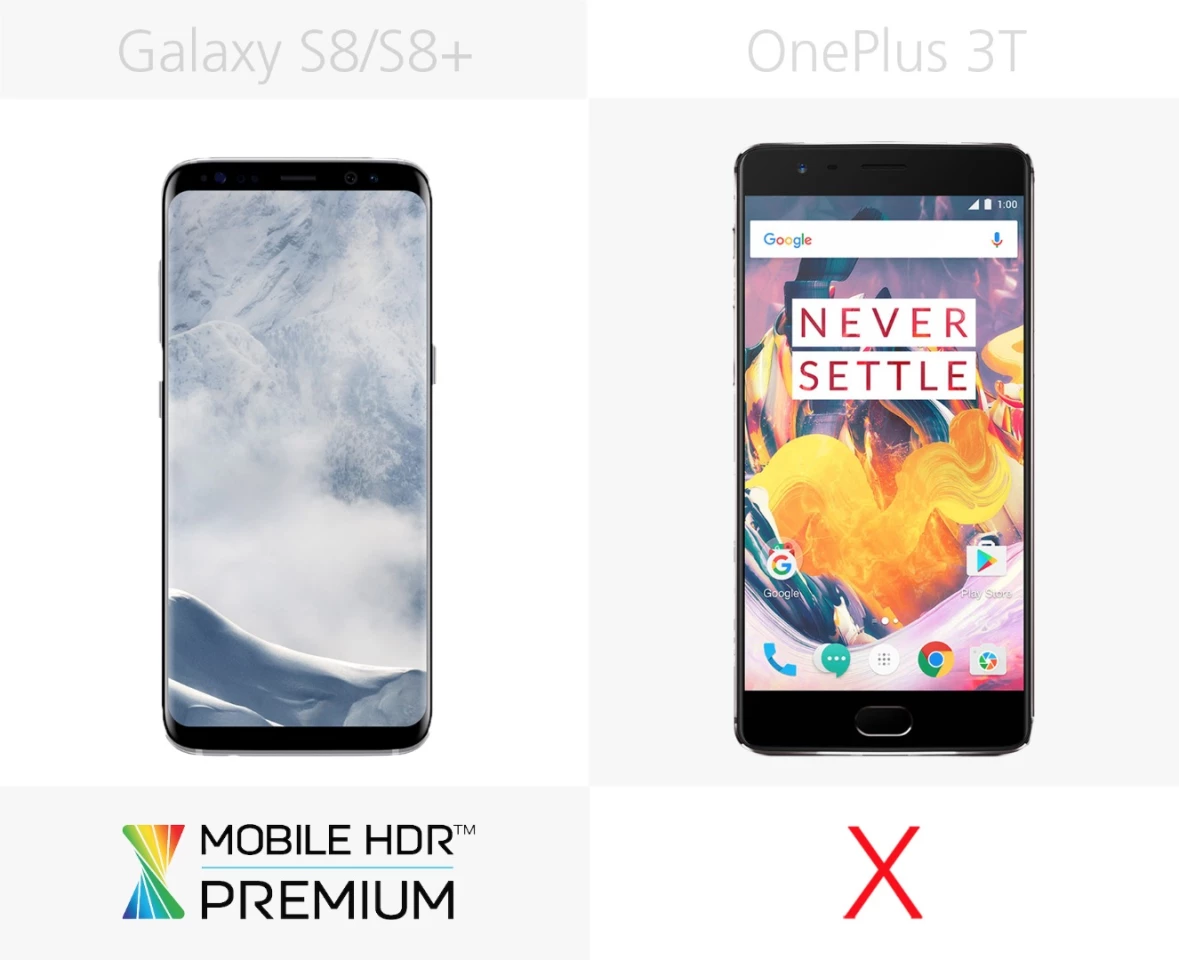
The Samsung S8 series displays are certified Mobile HDR Premium by the UHD Alliance. That means they meet certain quality standards for brightness, color gamut and contrast ratio – and support HDR video content.
Curved display
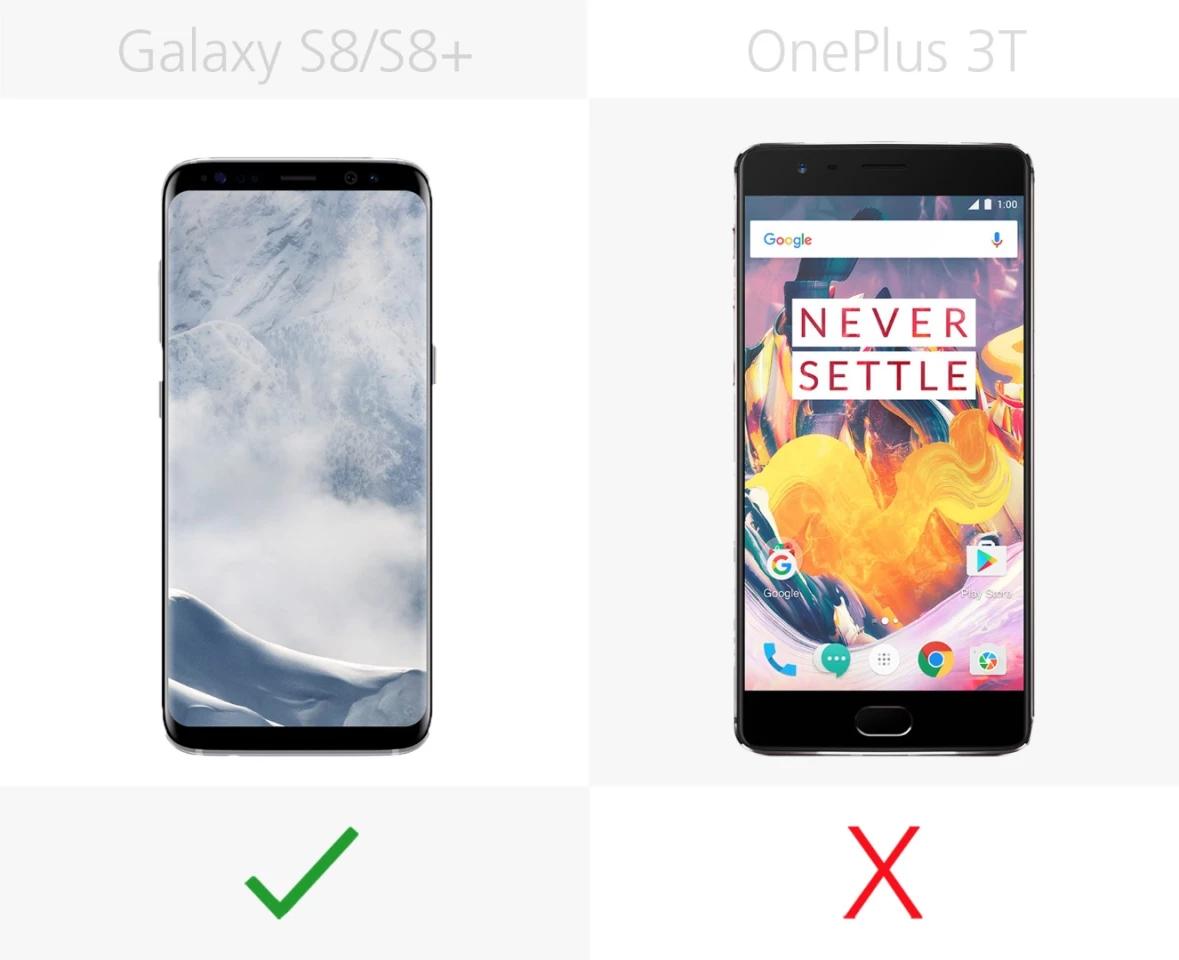
You may not be able to tell from photos alone, but both the S8 and S8+ have curved displays that wrap around the side edges of the phone. Like most smartphones, the OnePlus 3T has a flat front.
Home button
The onscreen home button contains some pressure-sensitive technology to differentiate between soft and hard taps, but based on our hands-on time alone, we couldn't quite determine how much that sensitivity is being put to work. (We'll explore that further in our full-length review.)
On the other hand, the OnePlus 3T has a capacitive home button below the display.
Fingerprint sensor
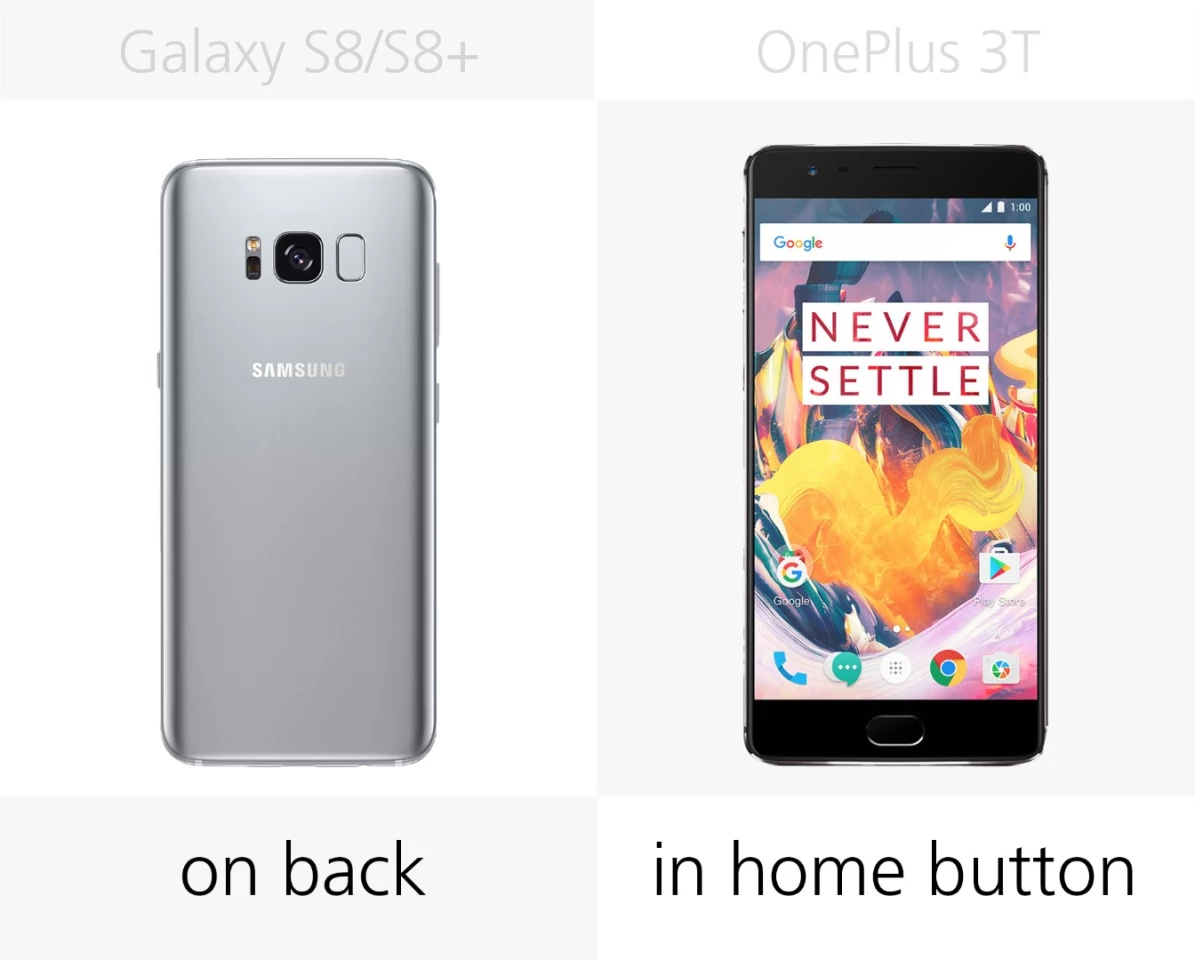
Both phones have fingerprint sensors. Samsung places it on the back to the right of the camera lens. OnePlus embeds it in the home button.
Face recognition

The S8 series also includes face recognition for unlocking your phone quickly, but it may not be as secure as you'd hope.
Iris scanning
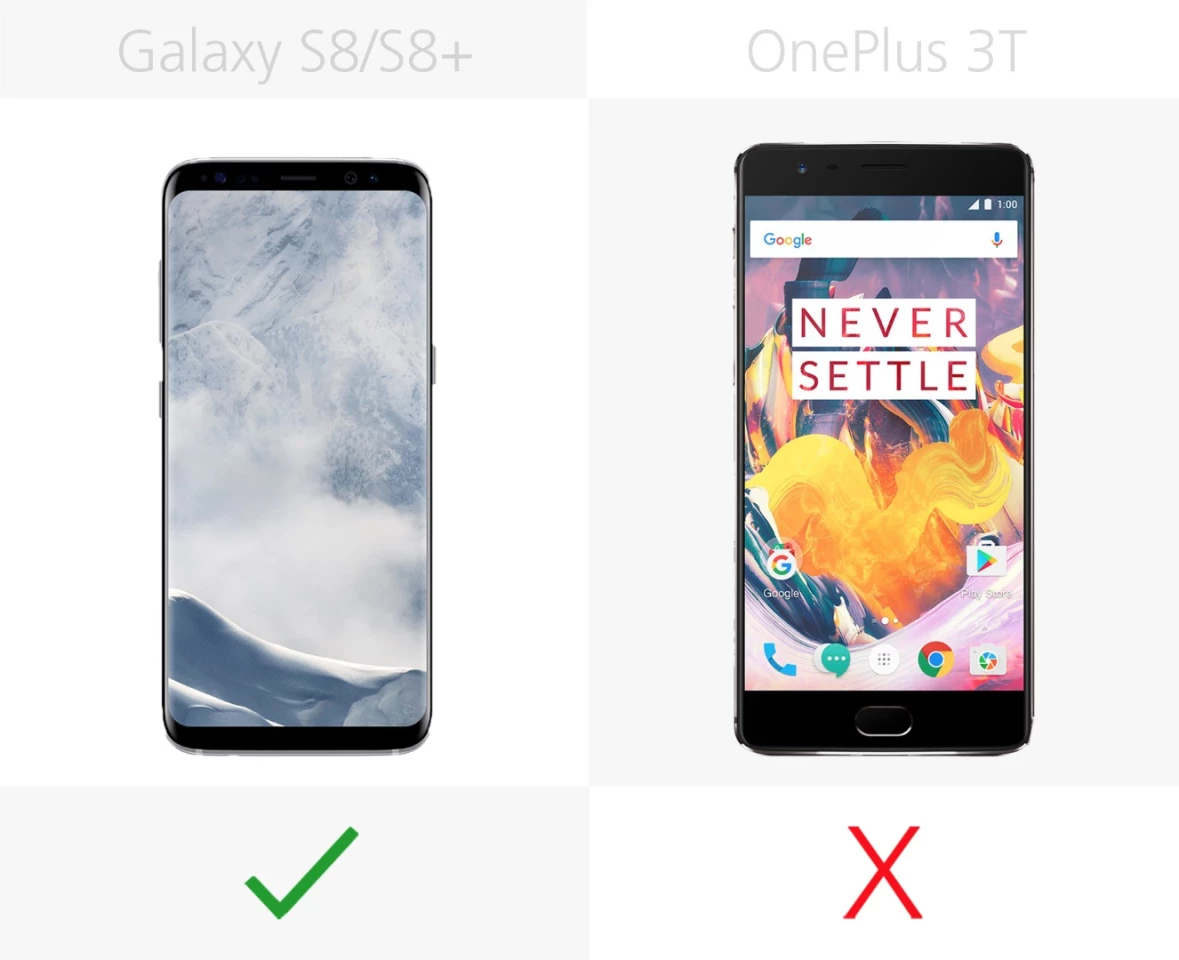
Samsung was liberal with the biometric options in the S8 and S8+. The iris scanning function has been improved since the first time we saw it in the ill-fated Note 7, but it still requires holding the phone at a specific angle.
Processor
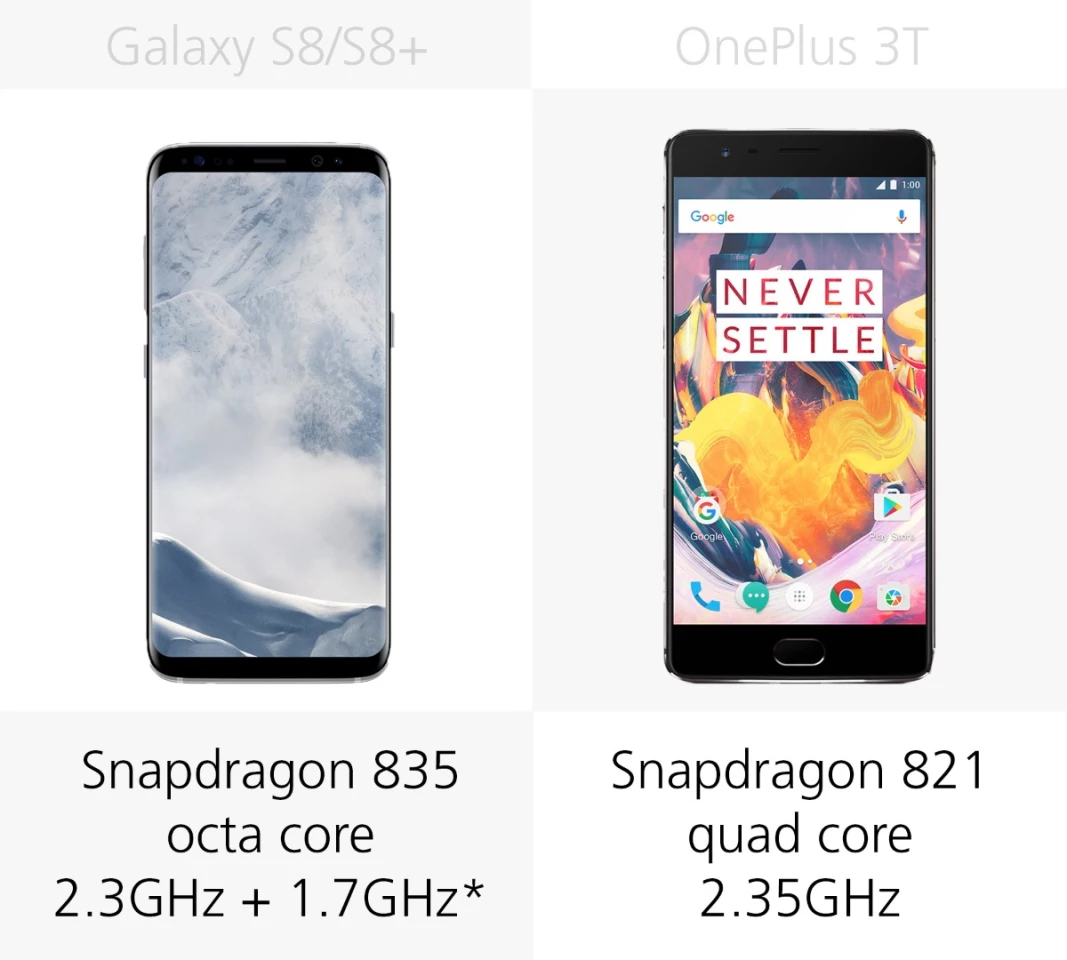
In the US and other large markets, the S8 series contains the latest Qualcomm Snapdragon 835 processor. In Korea and elsewhere, Samsung uses its own Exynos 8895 chip, which clocks at slightly higher speeds.
The Snapdragon 821 chip in the OnePlus 3T is a half-generation old (it's Qualcomm's late 2016 processor), but it's still very capable.
RAM
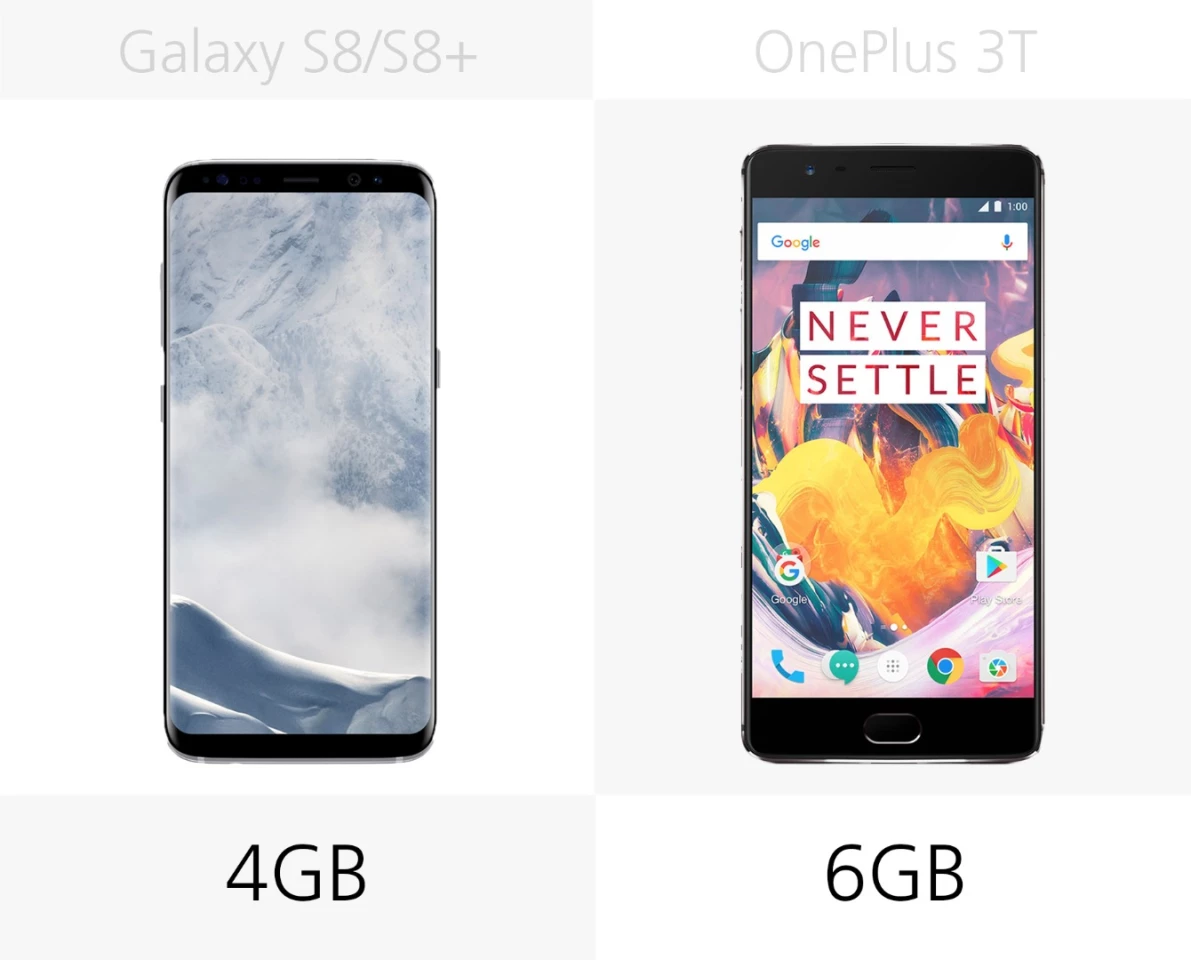
The OnePlus 3T has an industry-topping 6 GB of RAM.
Storage

As far as built-in storage goes, Samsung offers only one 64 GB option. OnePlus adds a 128 GB tier as well.
MicroSD

If 64 GB isn't enough, however, Samsung lets you expand storage via microSD.
Headphone jack
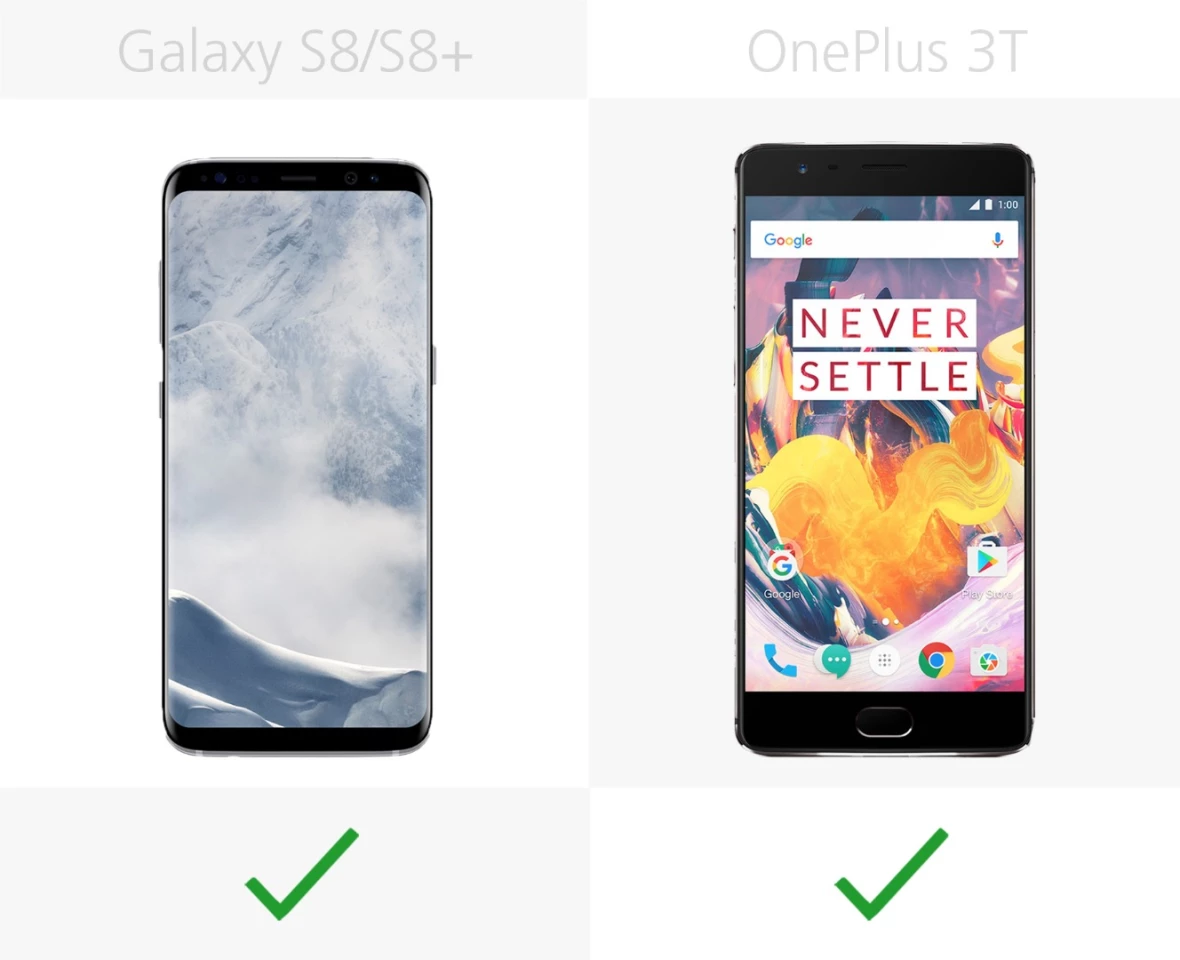
Neither maker copied the iPhone 7: The headphone jack remains intact.
Bundled headphones

Samsung bundles a pair of AKG earbuds (which sell separately for US$99) in the box, but with the OnePlus, you'll have to add your own.
Battery

The battery capacities range from 3,000mAh to 3,500mAh, but many factors affect overall battery life.
By Samsung's estimate, the S8 and S8+ both get up to 14 hours of Wi-Fi internet use per charge. In our test of the OnePlus 3T, the battery dropped 8-percent per hour (streaming video with screen brightness set at a constant luminance). We'll perform the same benchmark test when we get our hands on the S8 and S8+.
Wireless charging
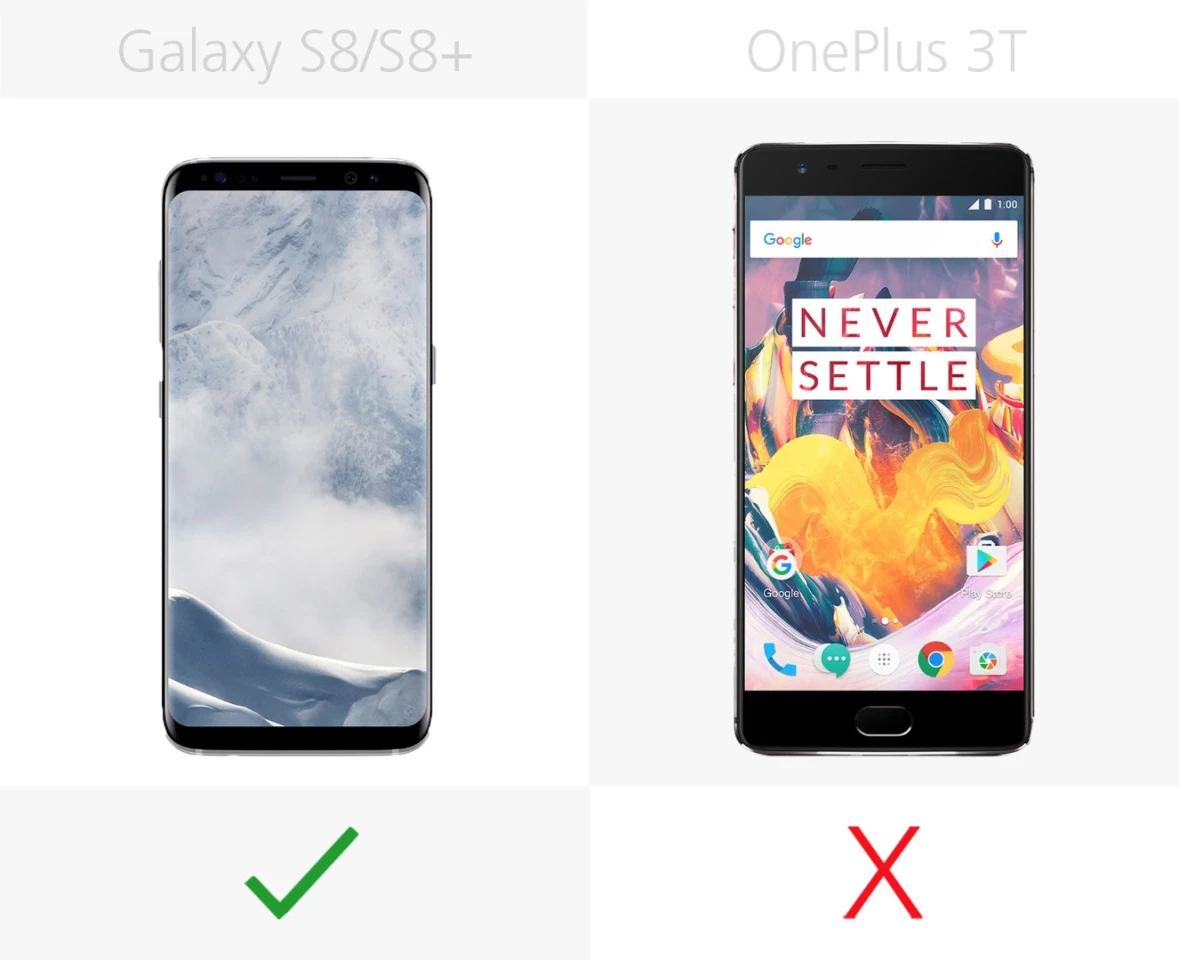
The S8 and S8+ support wireless charging (with a charging pad, sold separately) but the all-metal OnePlus does not. And if you splurge for a special Samsung-made charger, the S8 series also supports fast wireless charging.
Fast charging
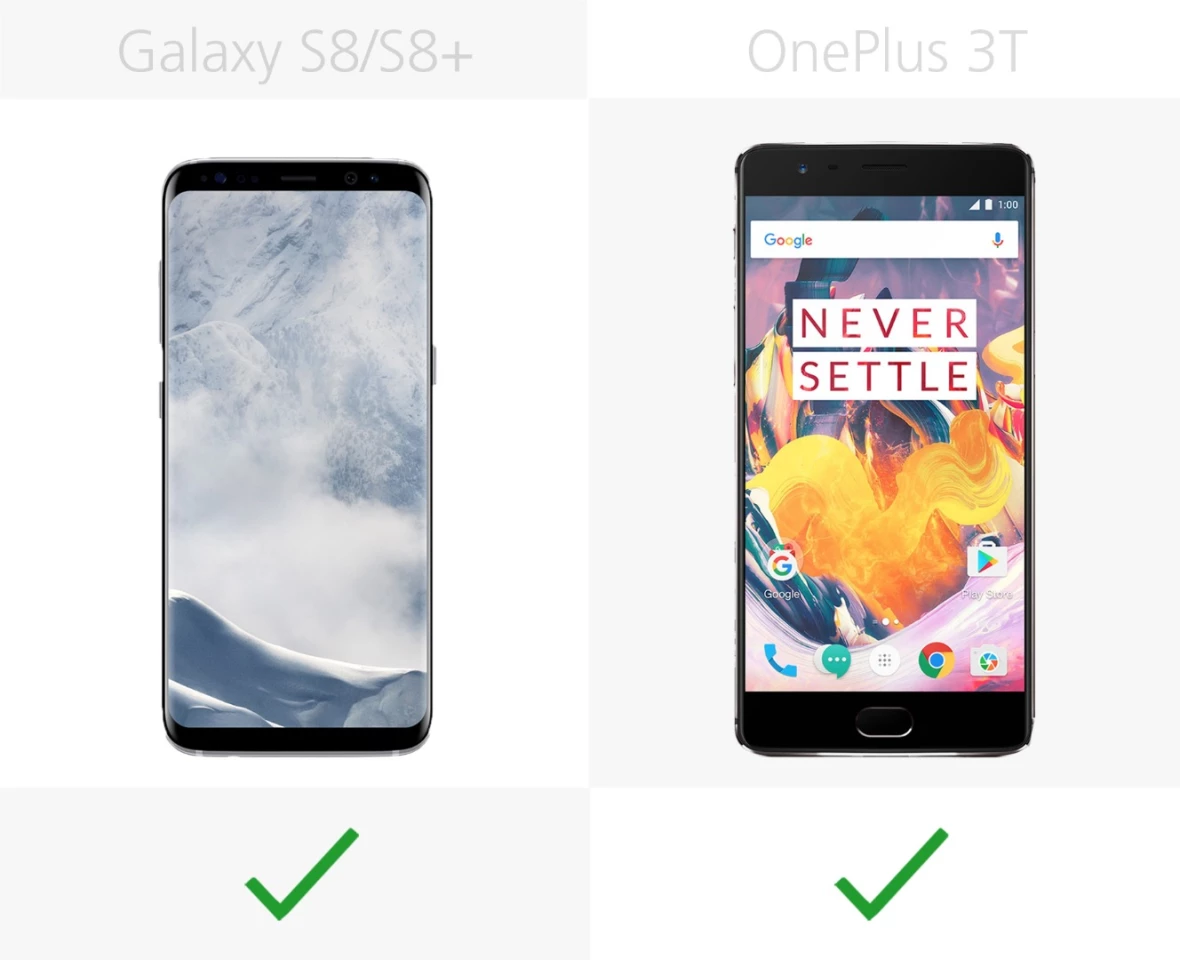
Both offer fast wired charging capabilities. OnePlus uses its own Dash Charge tech, which heats up the charger instead of the phone.
Camera megapixels

The OnePlus packs in more megapixels, especially in its selfie camera. Still, there's a lot more to smartphone photography than resolution alone. Considering the OnePlus 3T lost to last year's Galaxy S7 phones, the S8 series is practically guaranteed to be the better choice for photography.
Camera aperture (rear)
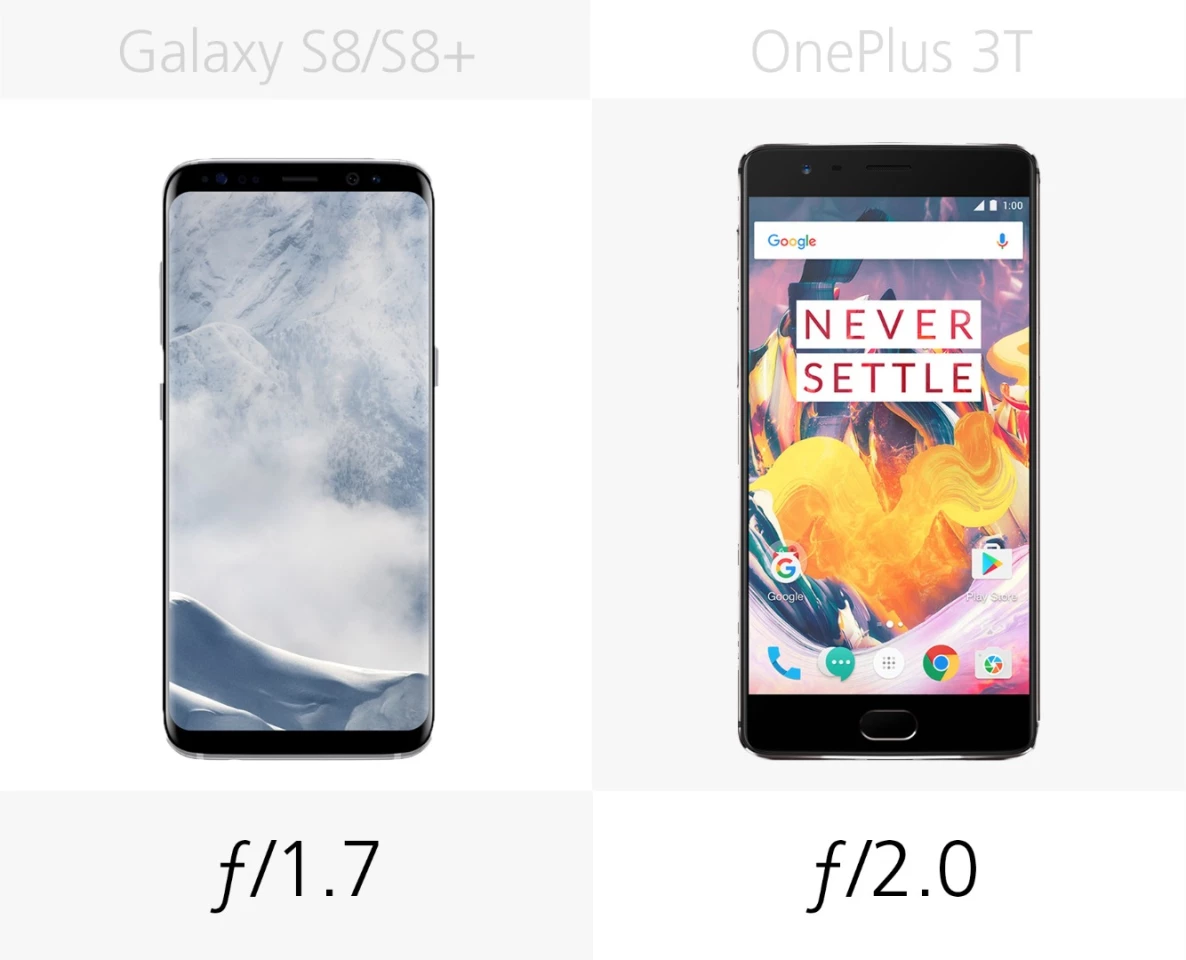
The S8 series phones have larger apertures, which should mean perks like better low-light shooting (the smaller the f-stop, the larger the aperture).
Dual-lens camera
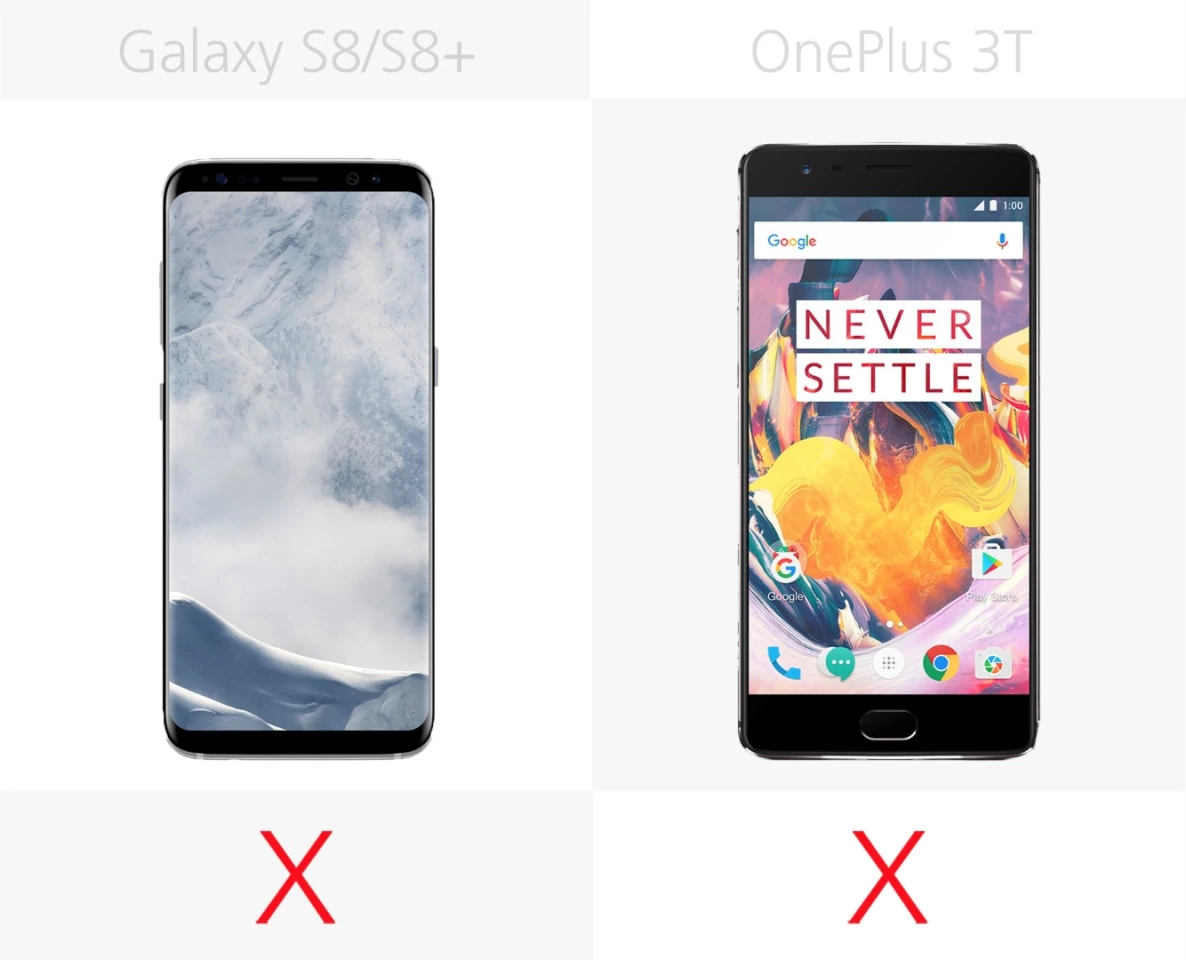
To be clear, neither of these makers included a trendy dual-lens camera.
Optical image stabilization (OIS)
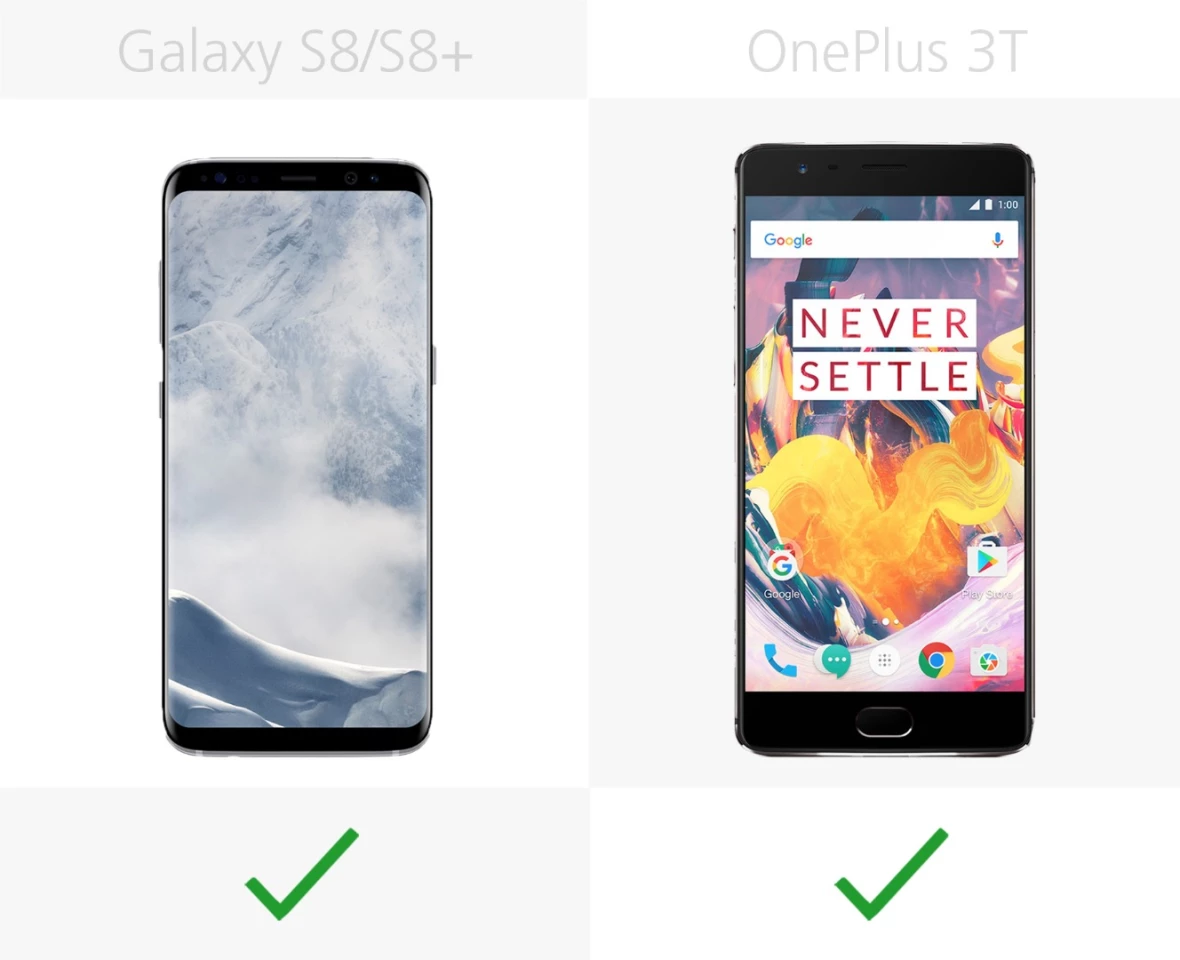
Both have OIS, which battles photo blur that arises from shaky hands and/or longer exposures.
Mobile payments
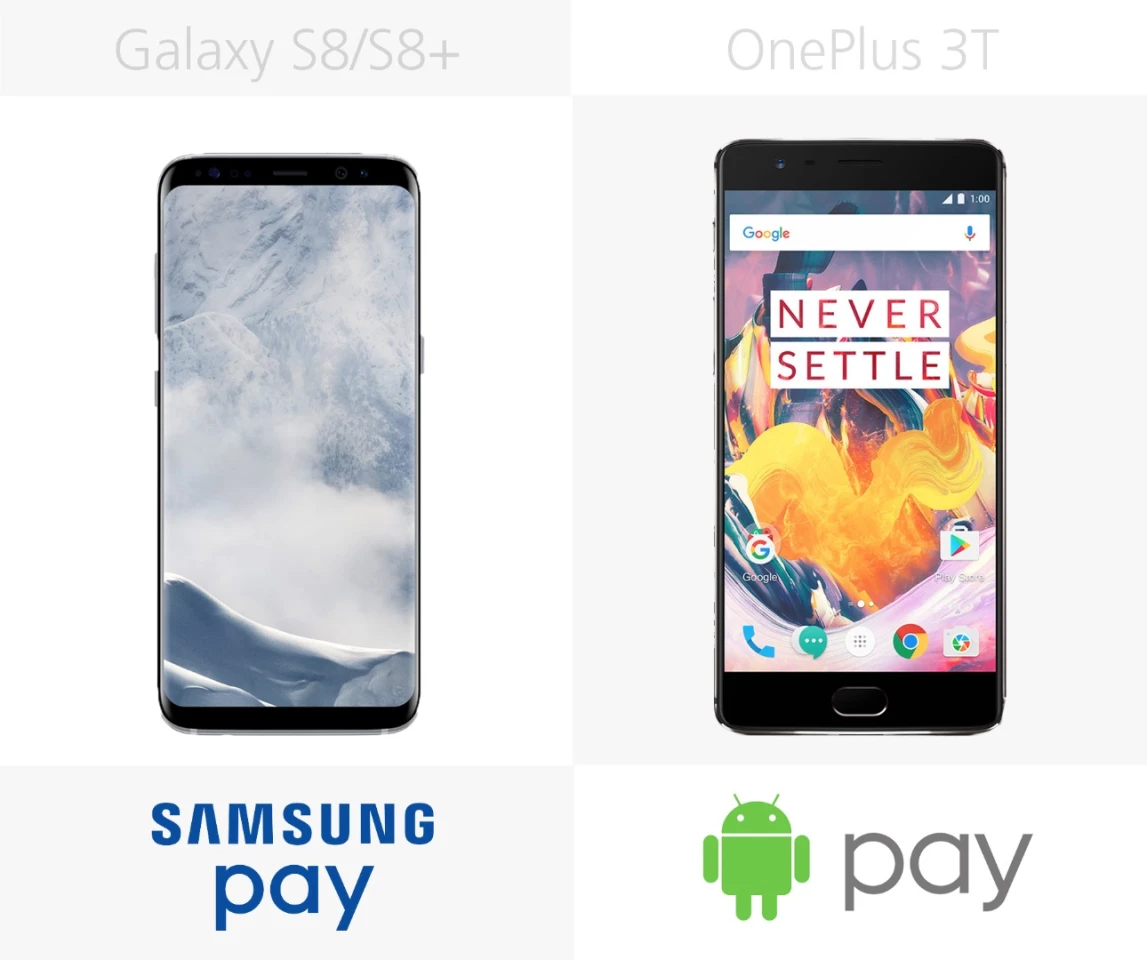
The S8 and S8+ support Samsung Pay, while the OnePlus 3T works with Android Pay. Samsung Pay could be a little more convenient, since it can be used with both NFC and magnetic strip readers.
Voice assistant

The OnePlus 3T did not support Google Assistant at launch (for starters, it launched with Marshmallow), but it has since been added.
The S8 and S8+ have both Google Assistant and Samsung's competitor, Bixby. There's a dedicated Bixby access button on the side of the phone.
VR headset
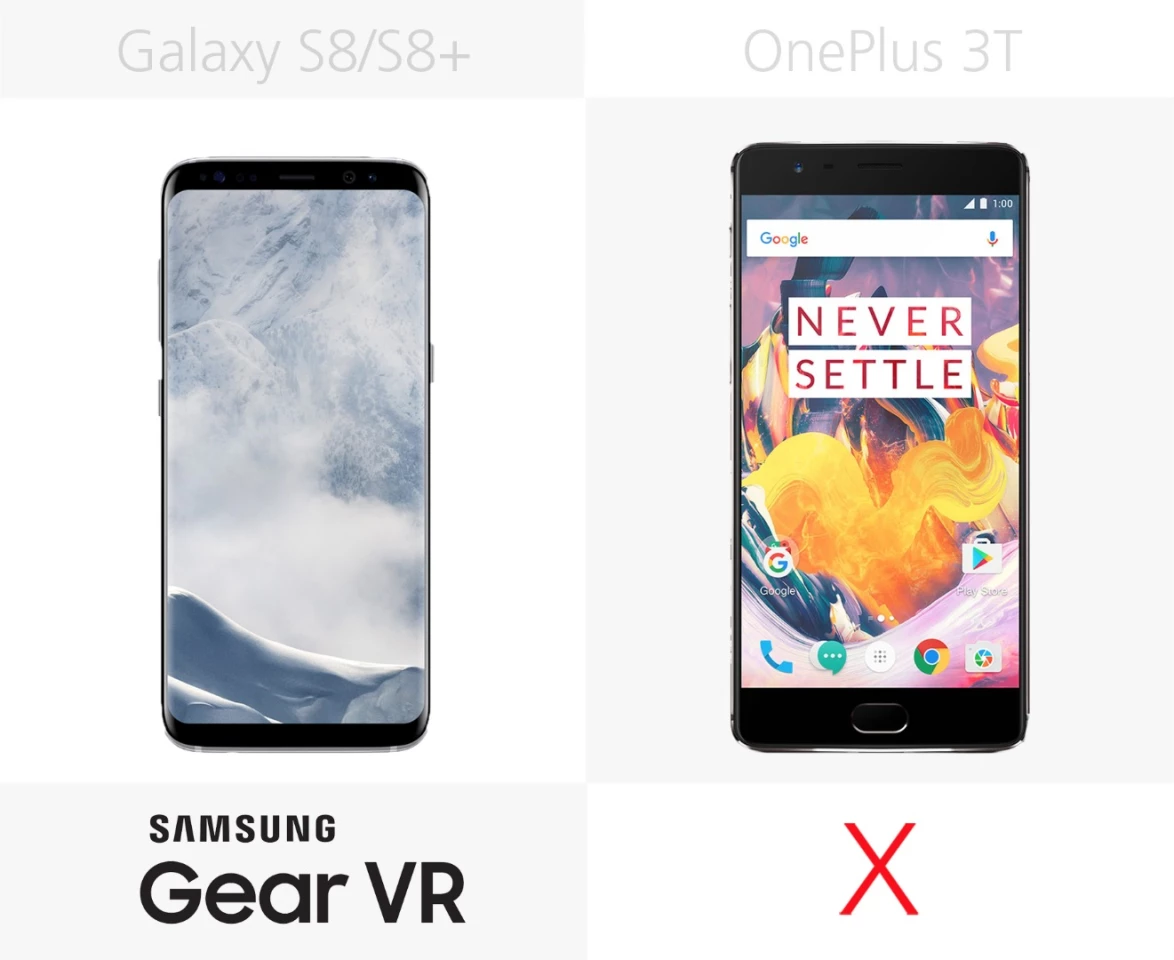
The OnePlus 3T does not support any significant mobile virtual reality headset, apart from Google Cardboard and similar accessories. The S8 and S8+ are compatible with the Samsung Gear VR.
Desktop dock
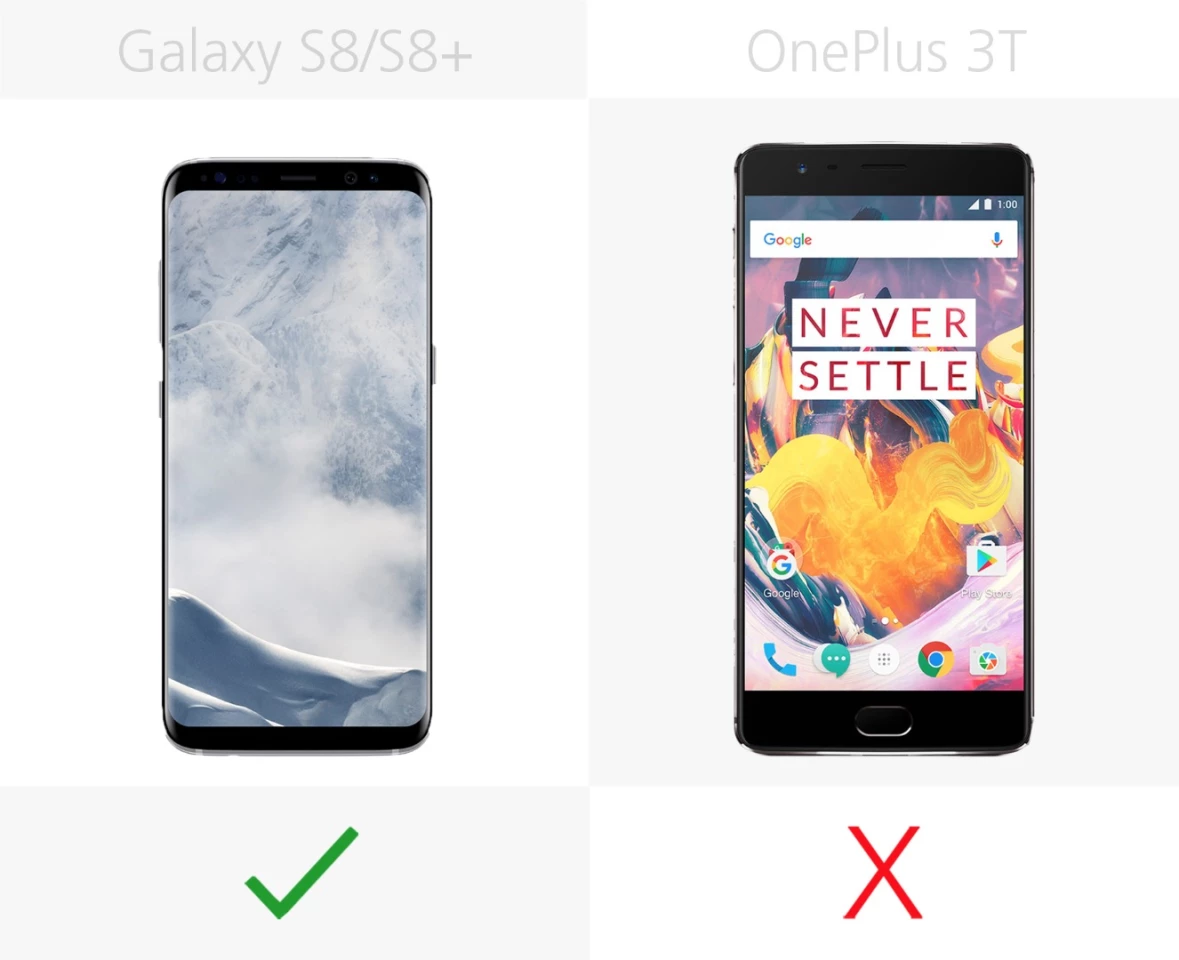
At the S8 launch event, Samsung unveiled the DeX dock, which can use the S8 and S8+ to power a desktop-like computing experience on a separate monitor, keyboard and mouse.
Release

The OnePlus 3T has been around for several months now, but the latest Samsung flagships hit shelves later this month.
Software
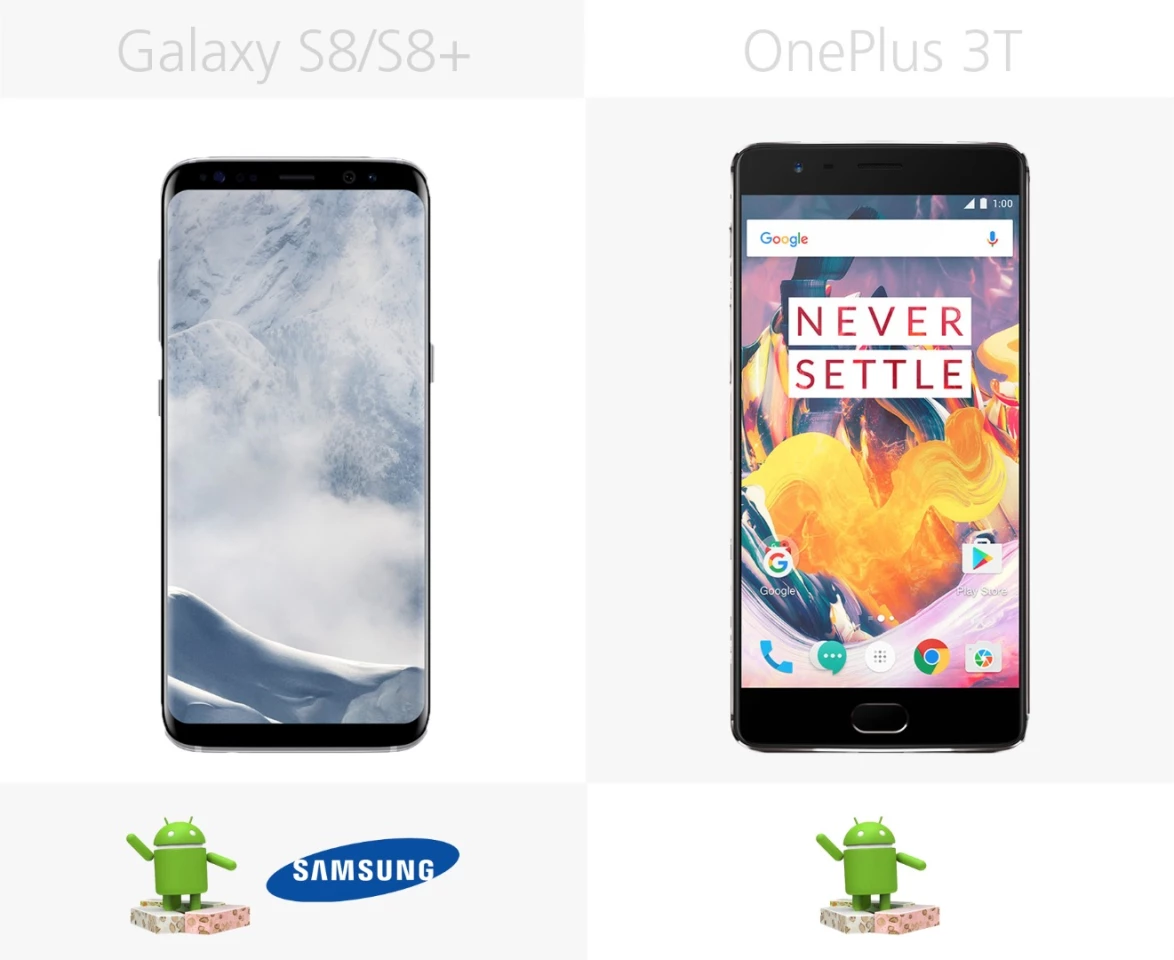
The Samsung phones run Android Nougat with the TouchWiz UI layered on top. OnePlus also runs Nougat, but only lightly adds a few extra features in its OxygenOS to Google's stock experience. Overall, the 3T experience is much closer to stock Android.
Starting price (full retail)
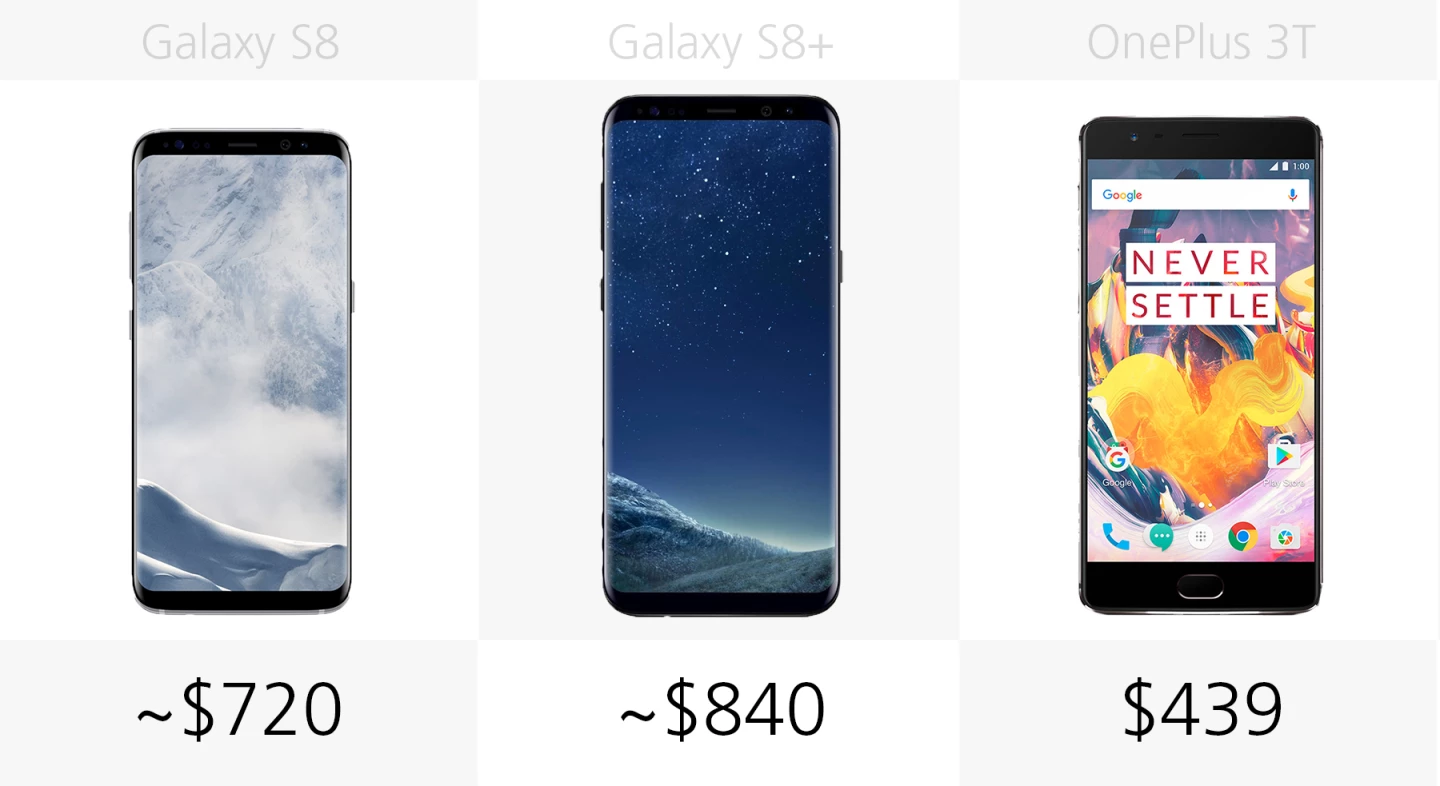
Samsung prices vary according to carrier and payment plan, but either way, count on paying hundreds of dollars more than you would for a OnePlus 3T. The S8 flagships are some of the most expensive phones around, while OnePlus angles for value.
While you're going to pay much more total for the S8, one advantage Samsung's phones have is that you can buy them on an installment plan, to spread the cost out over two years or so. You'll need to buy the OnePlus 3T in full.
For the kind of info you won't find on spec sheets, check out our hands-on impressions of the S8 and S8+ (we'll post a full-length review once the phones hit the market) and our review of the OnePlus 3T.

